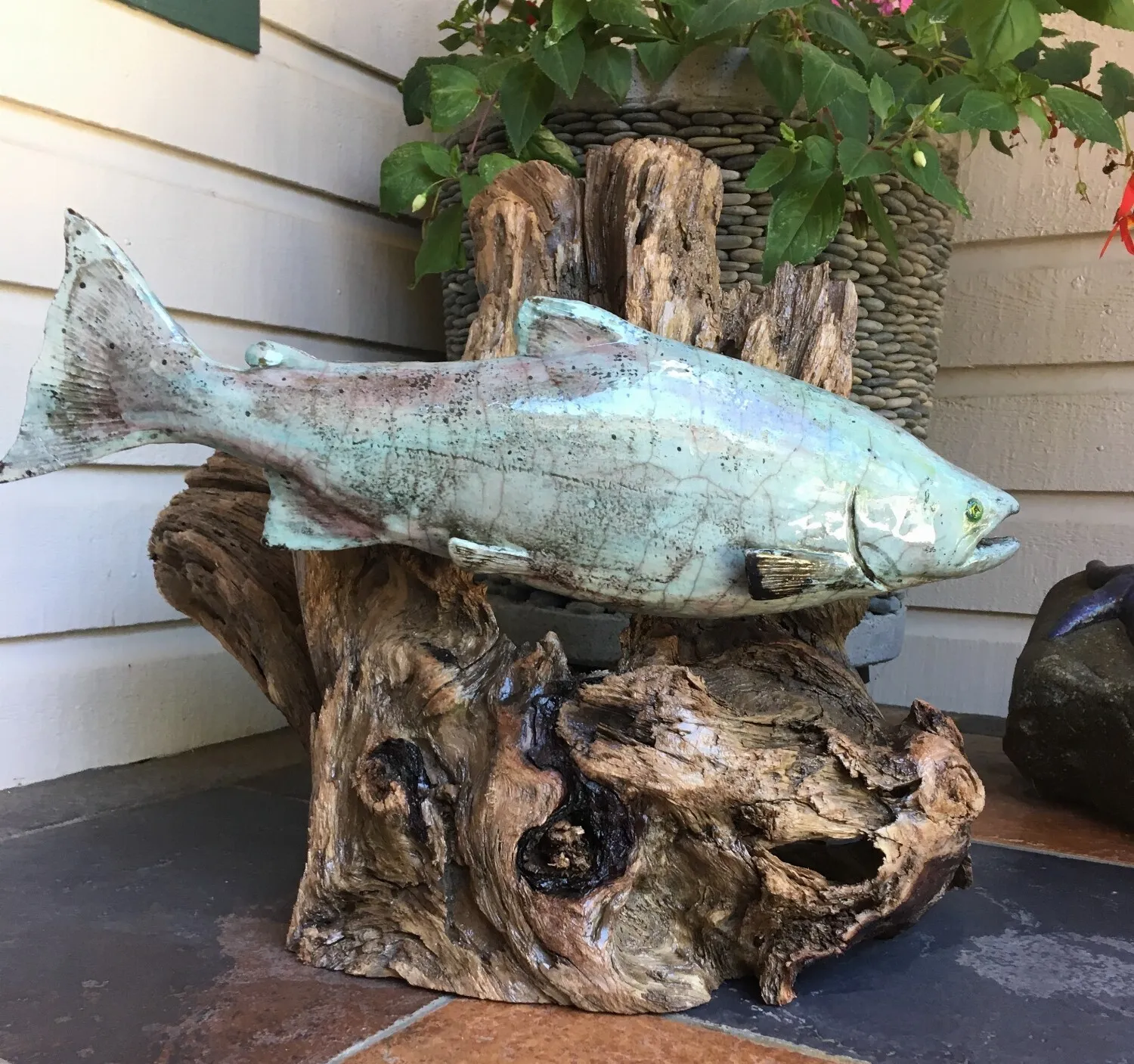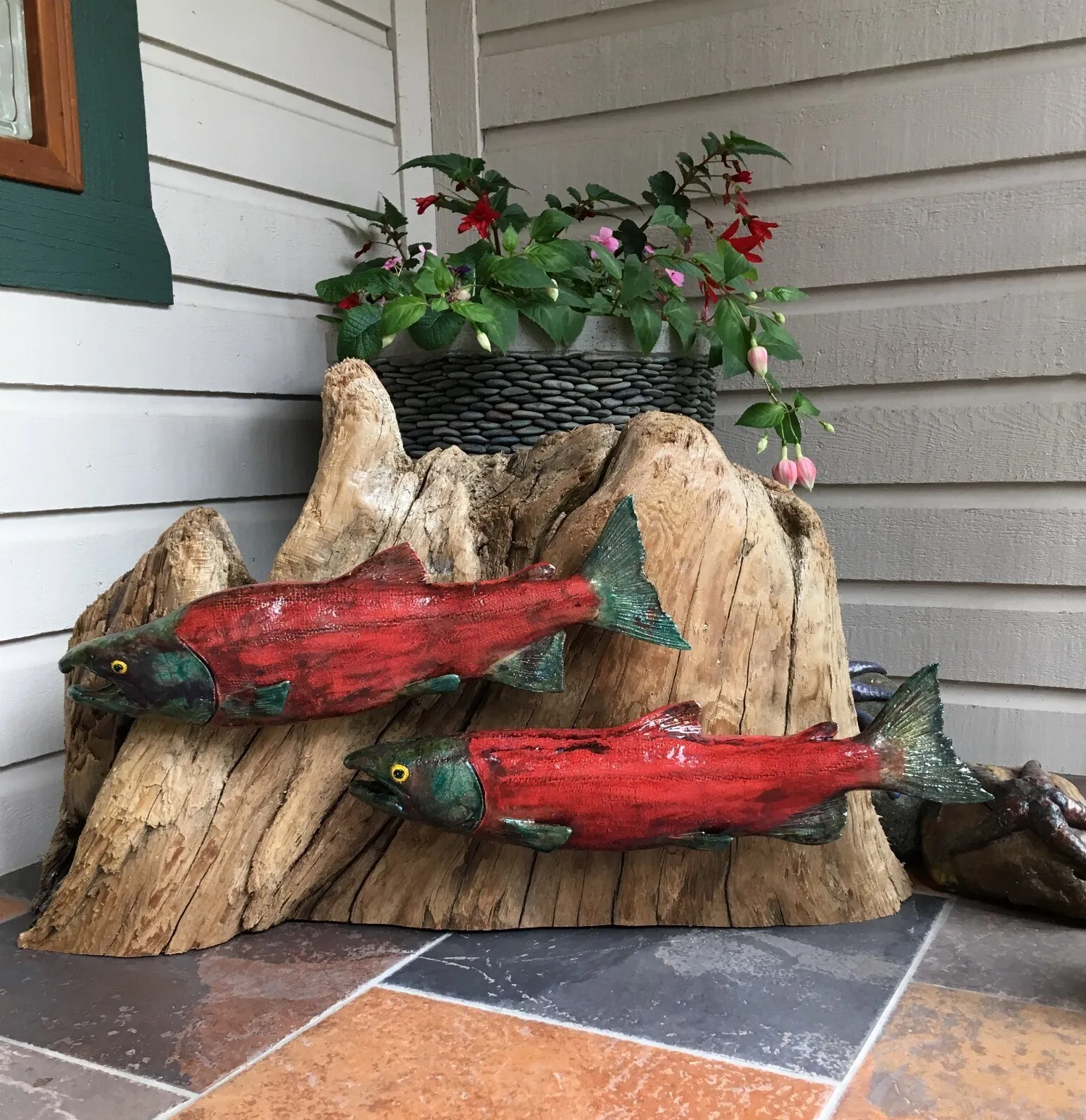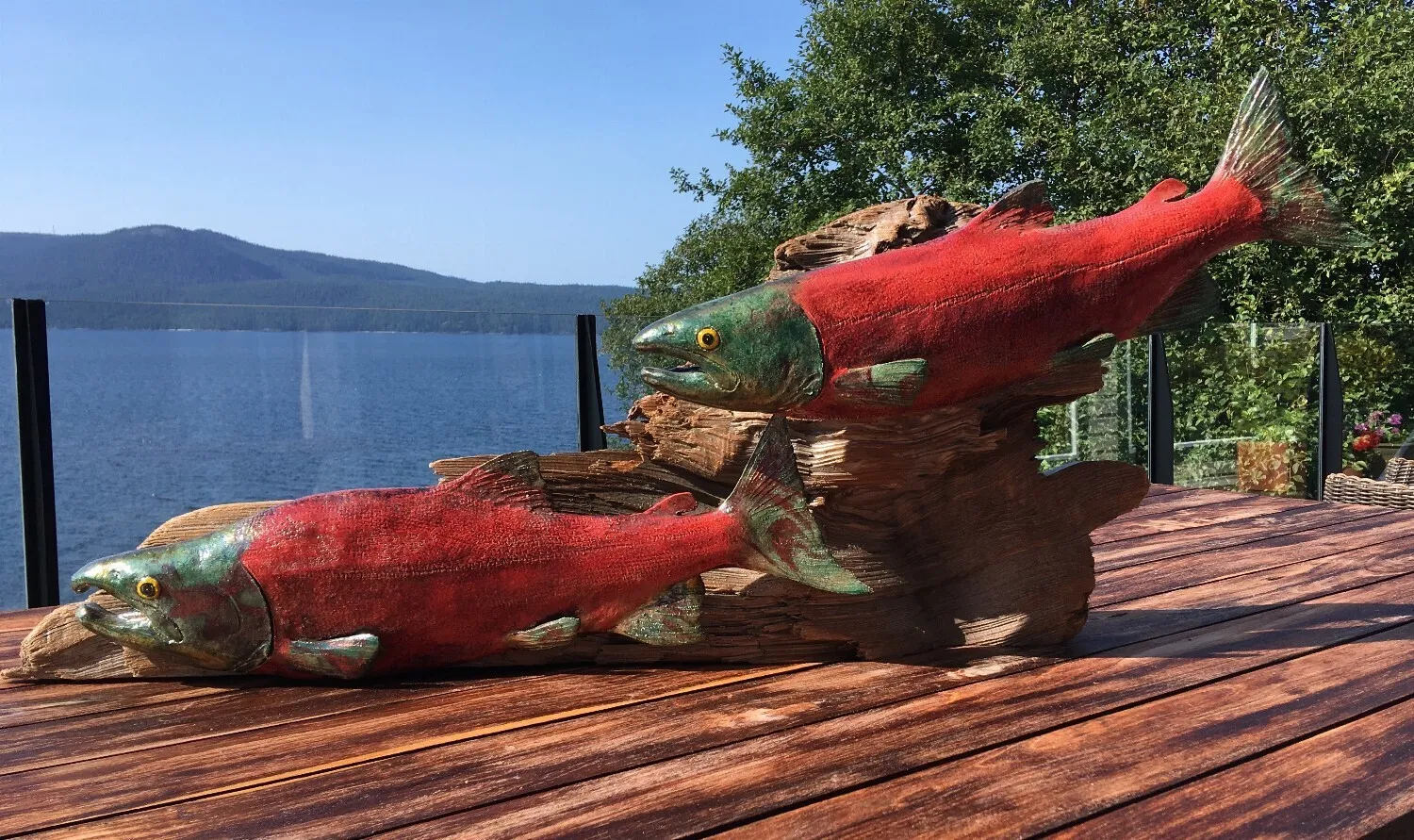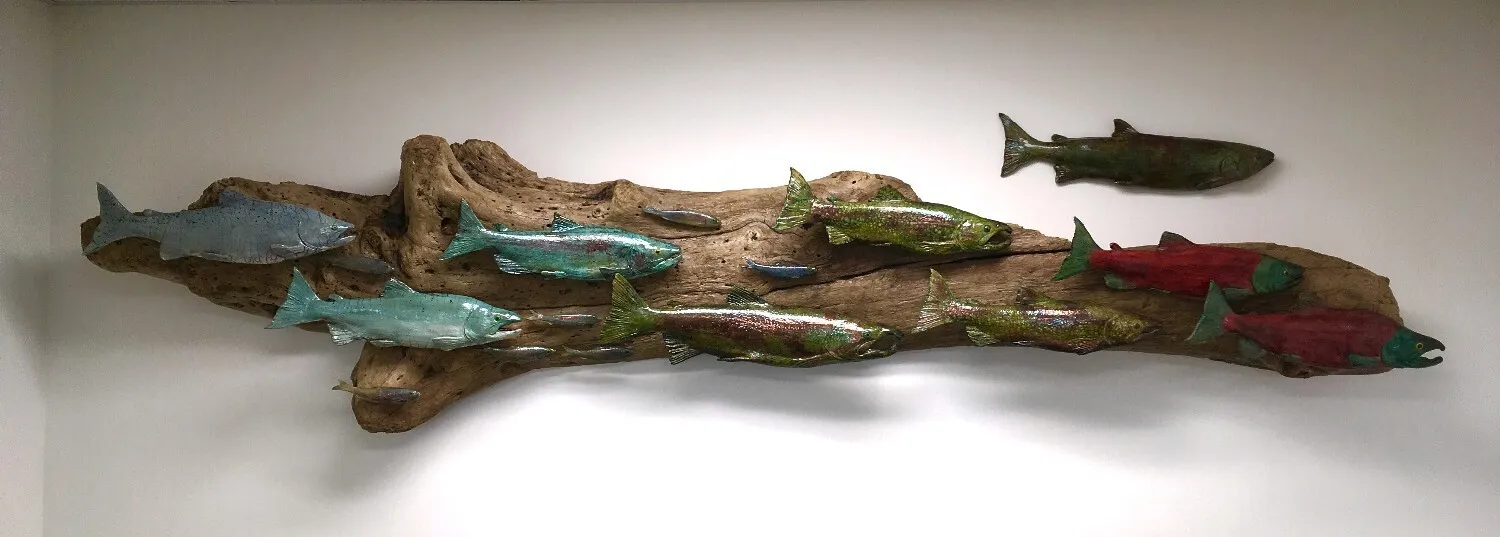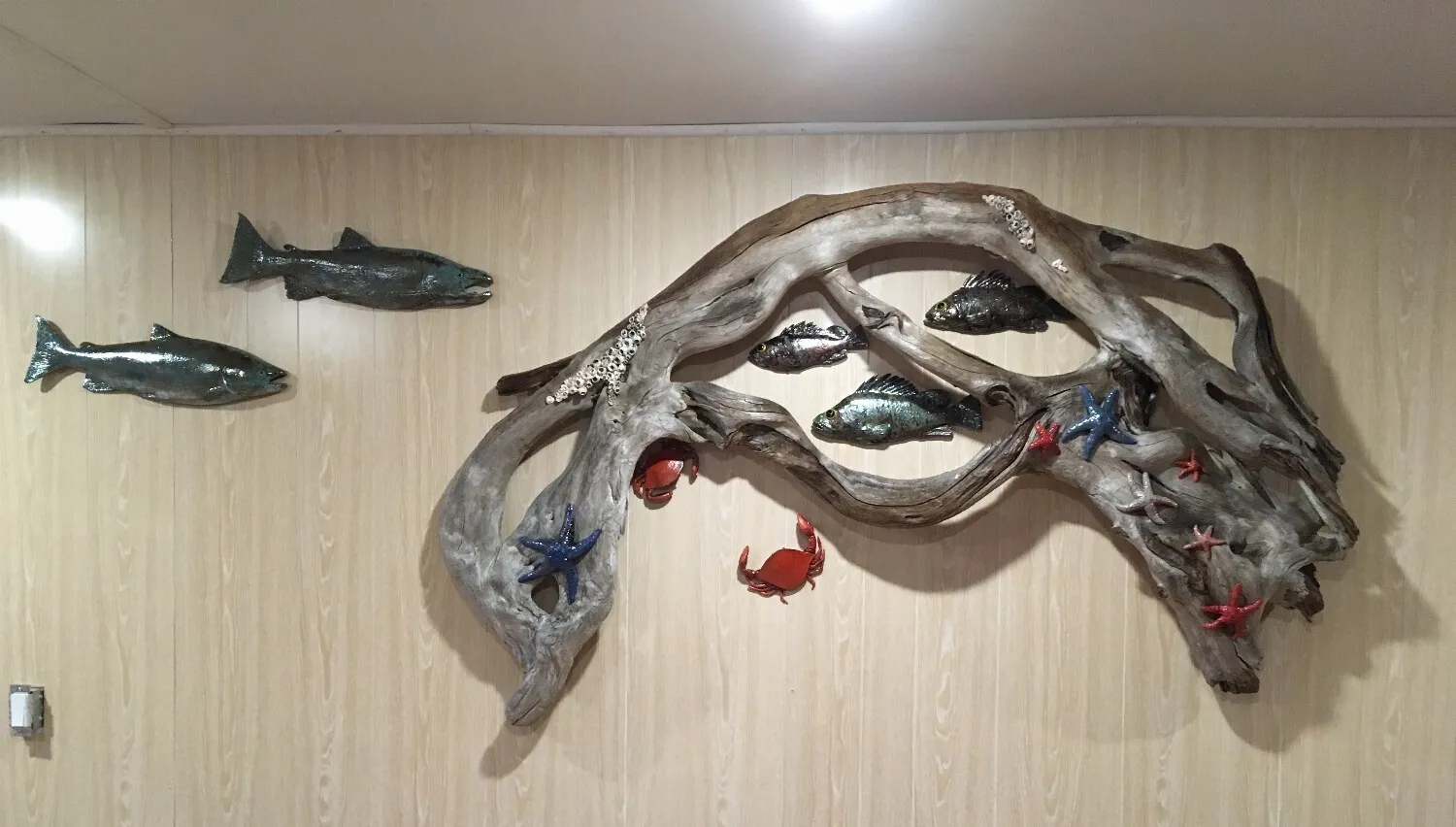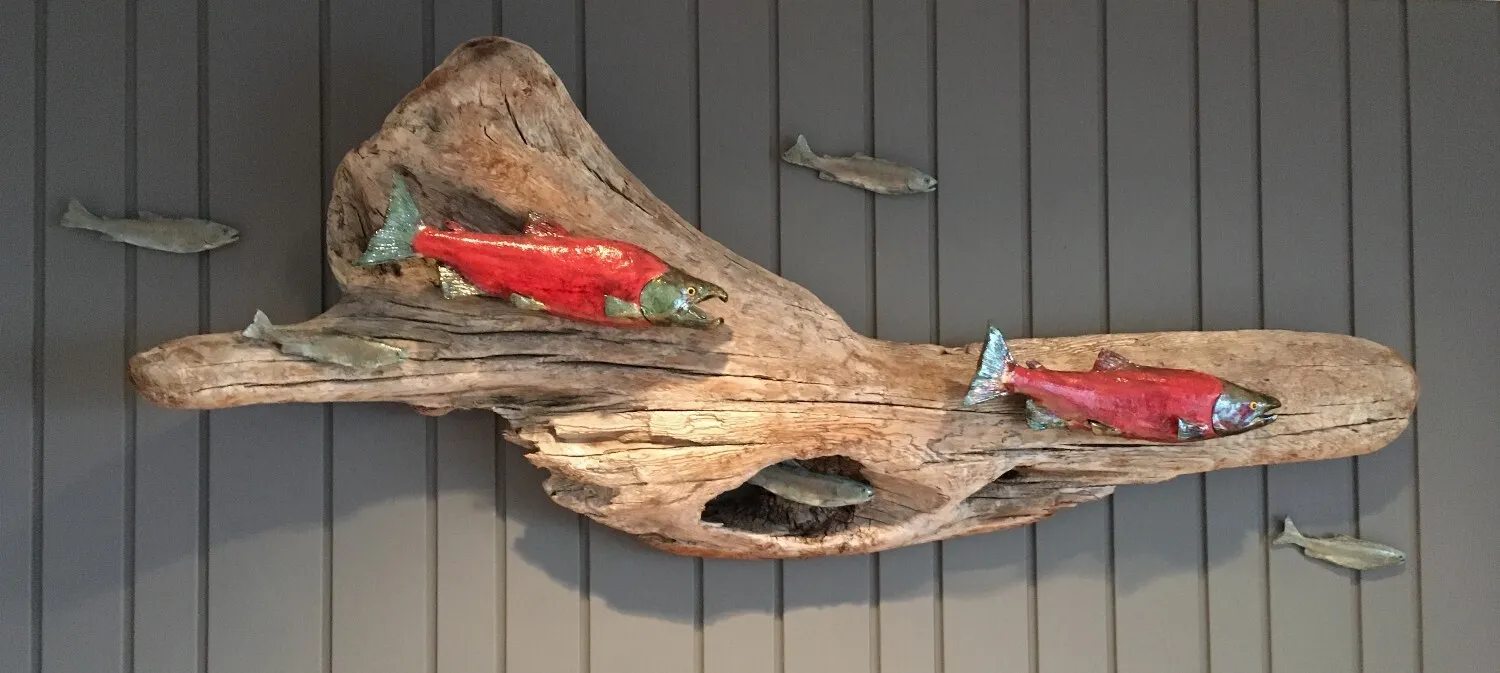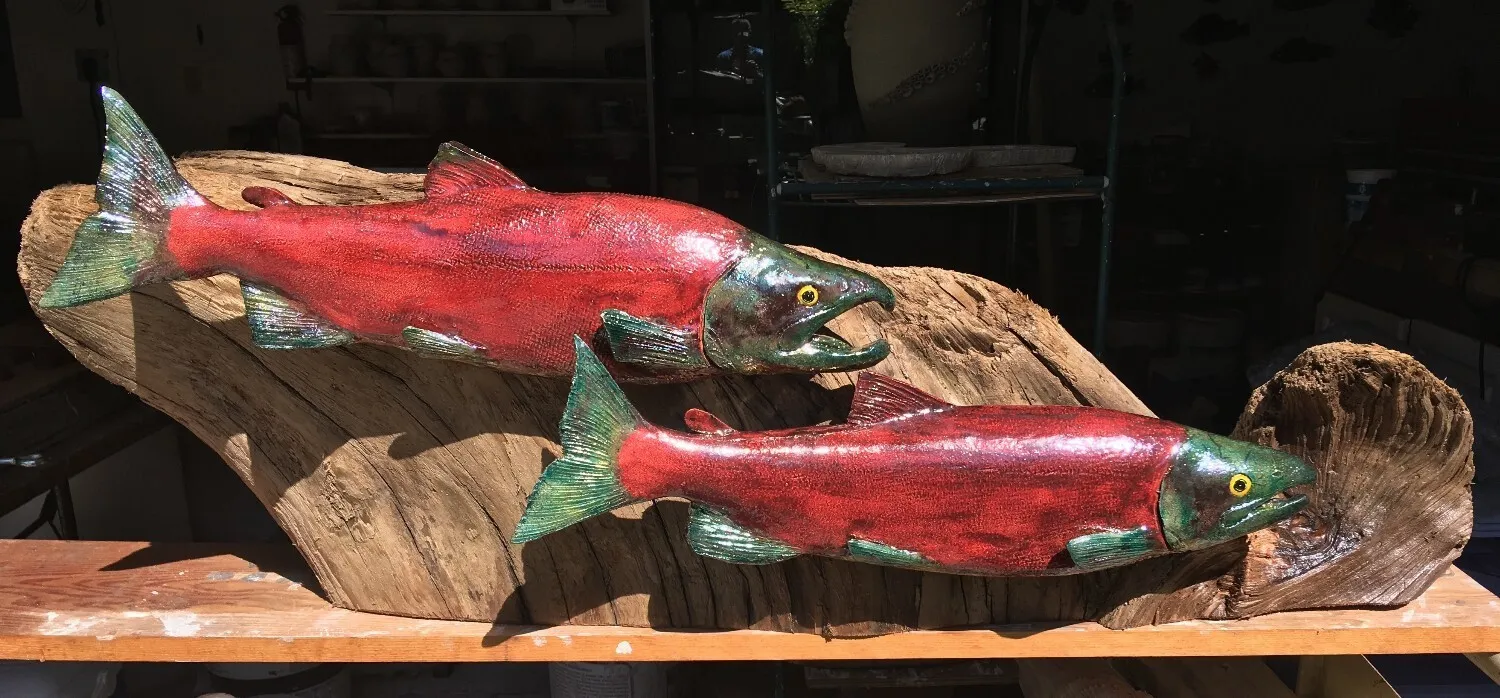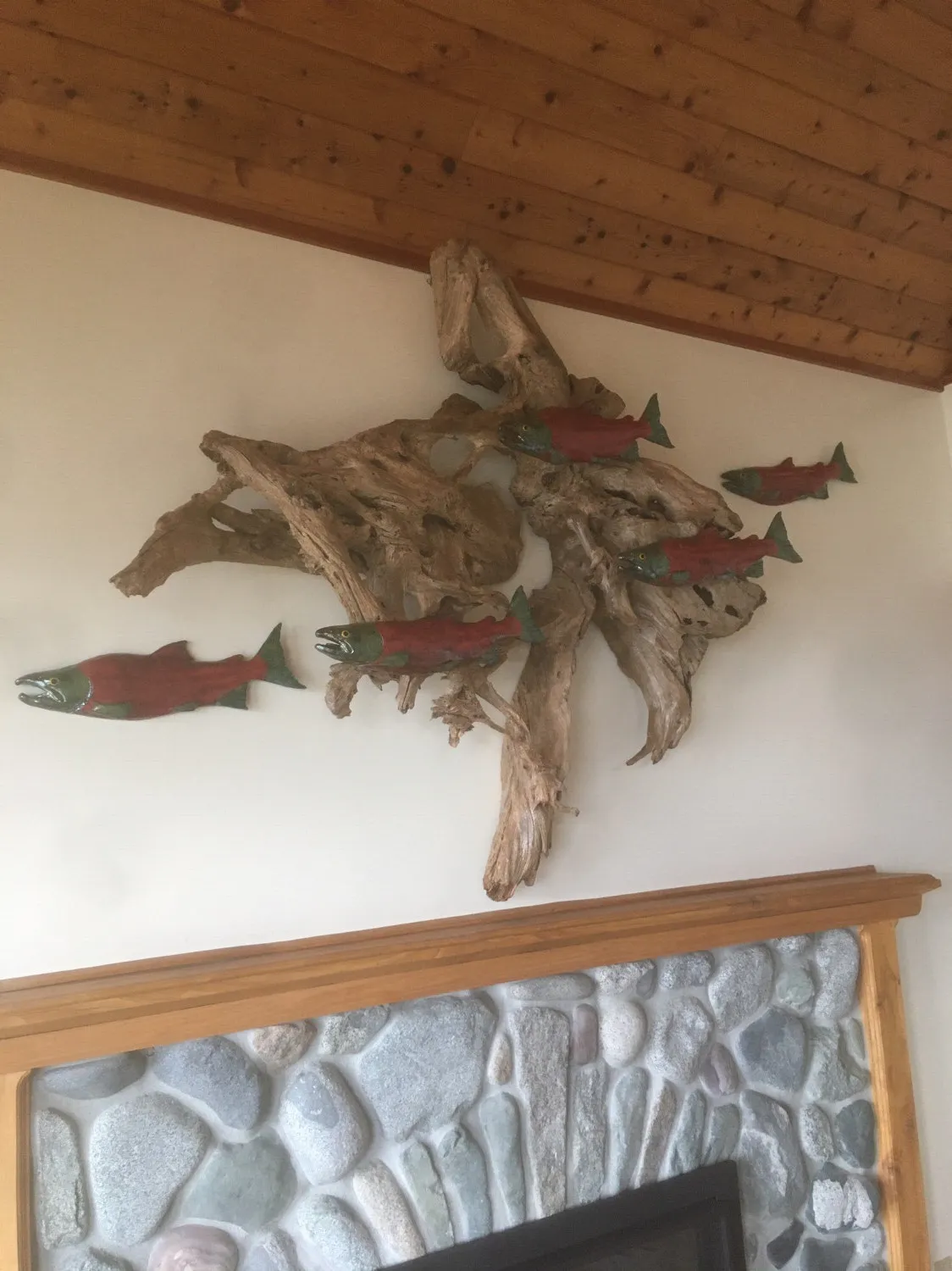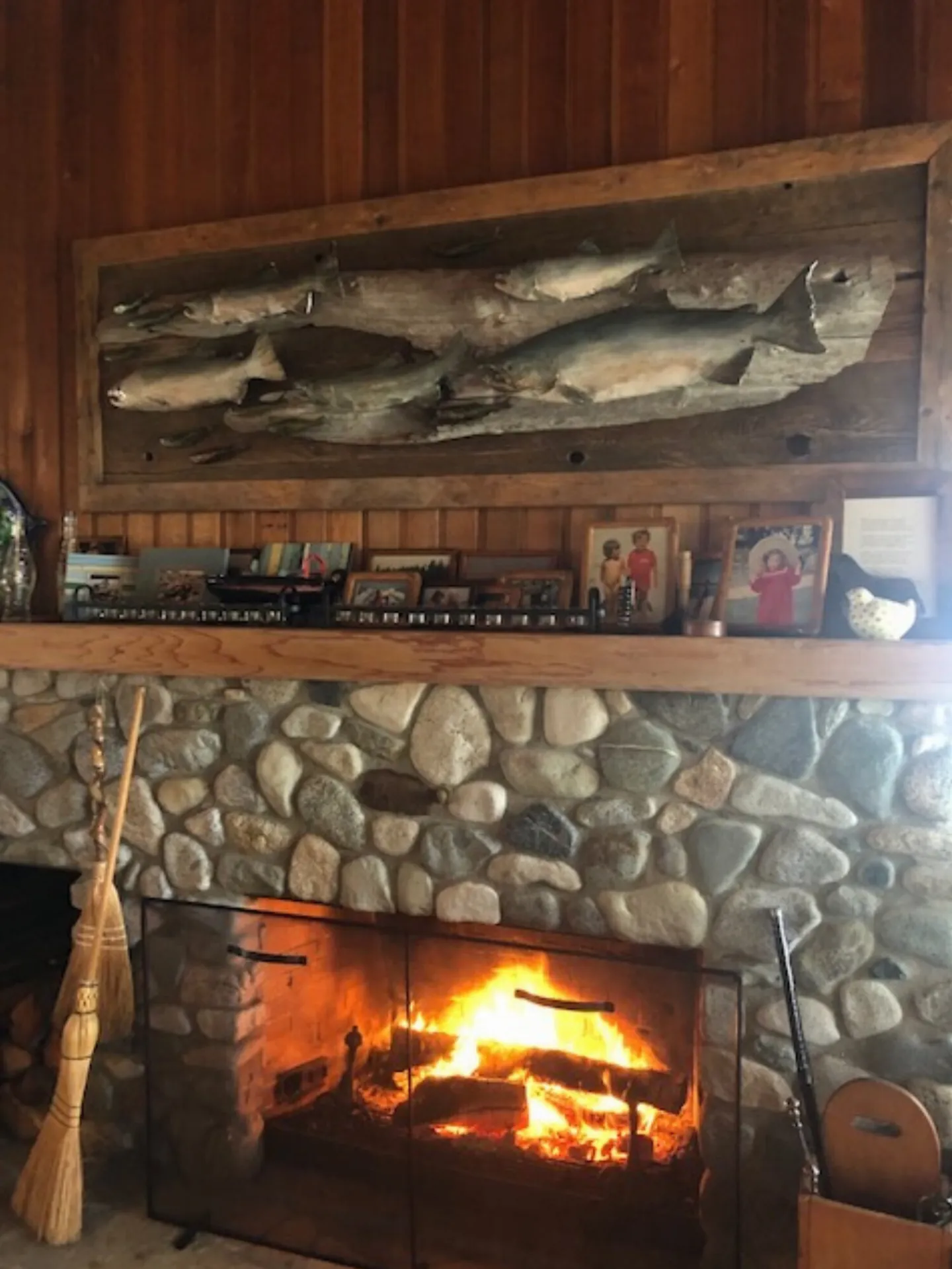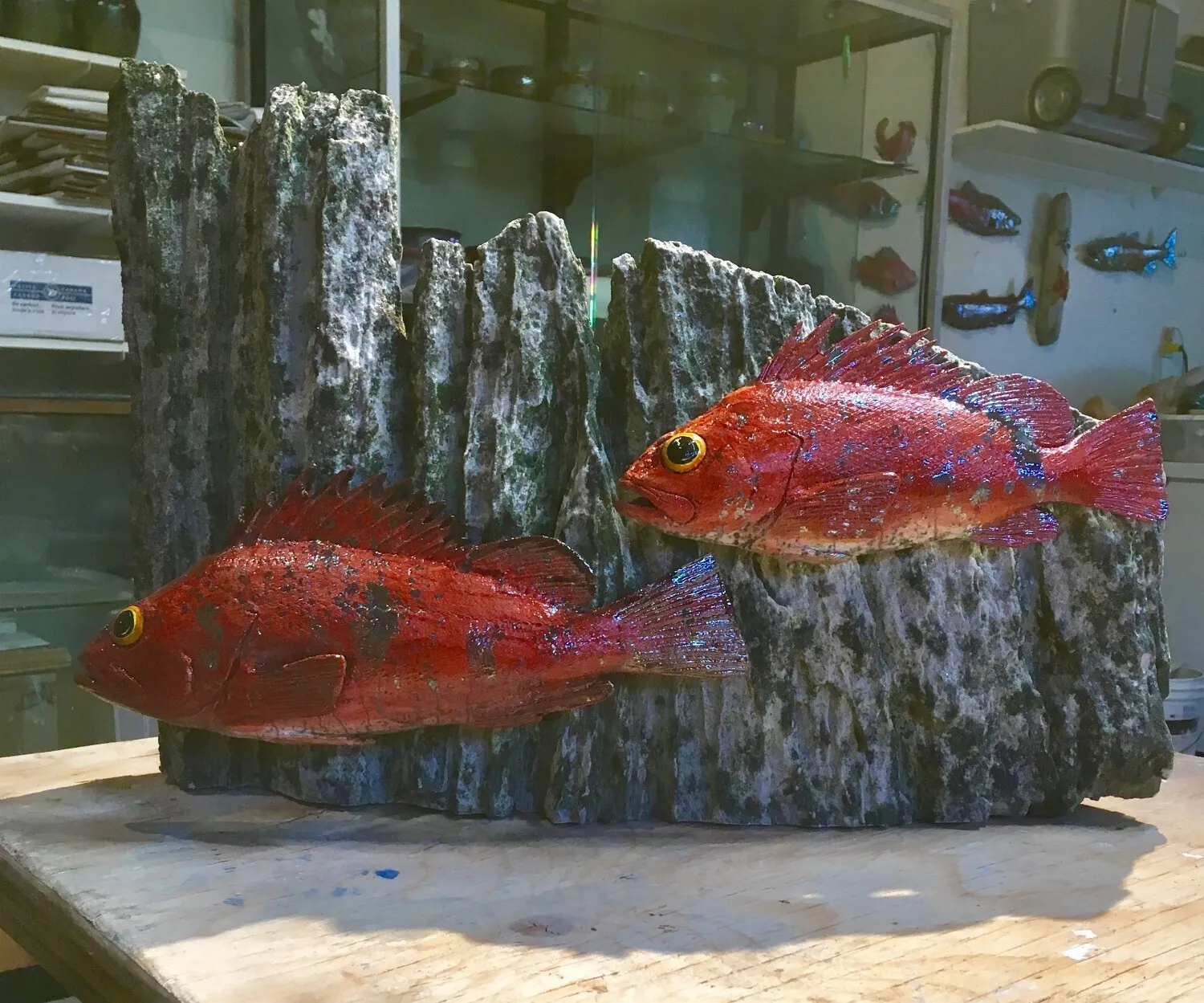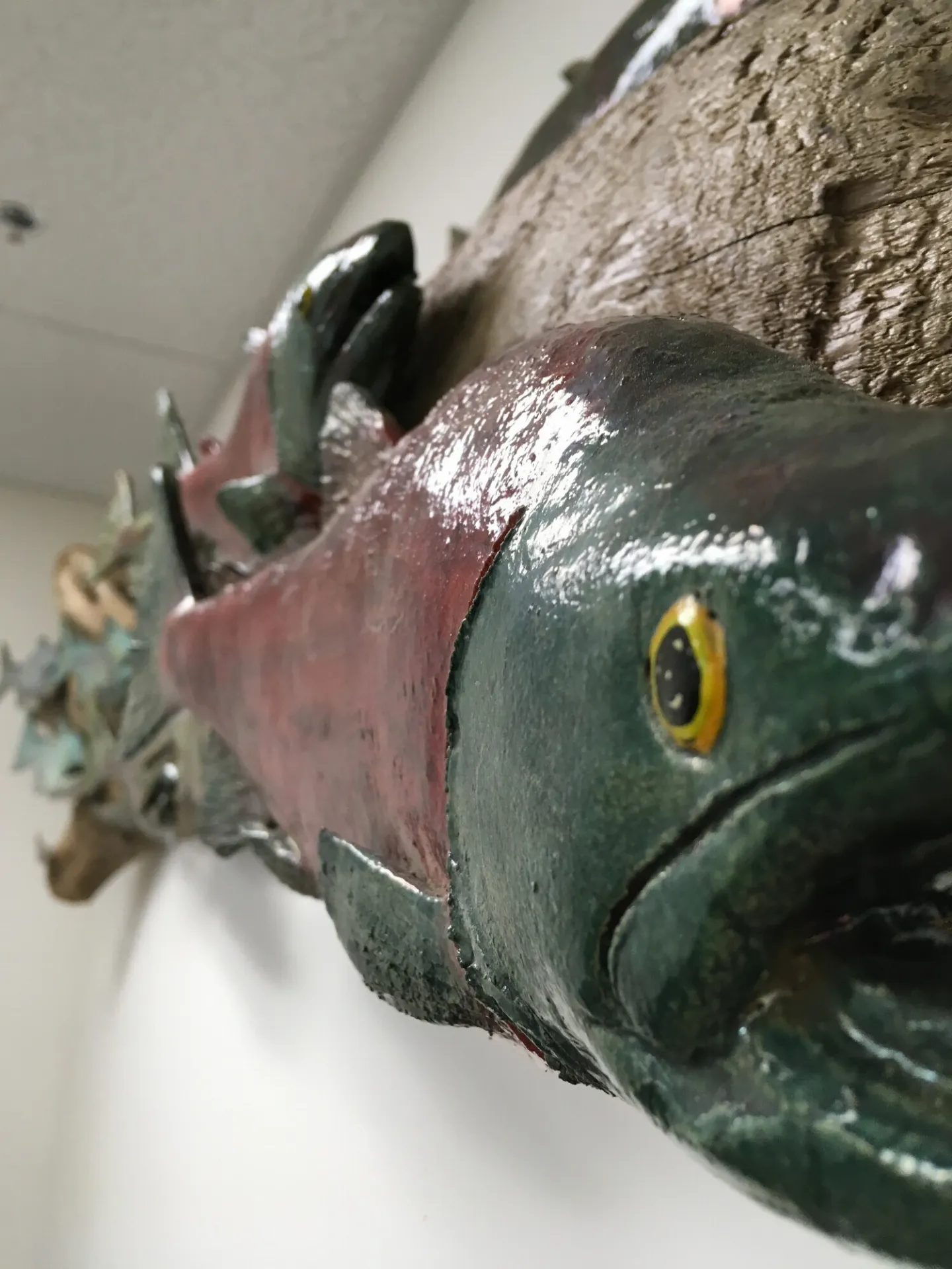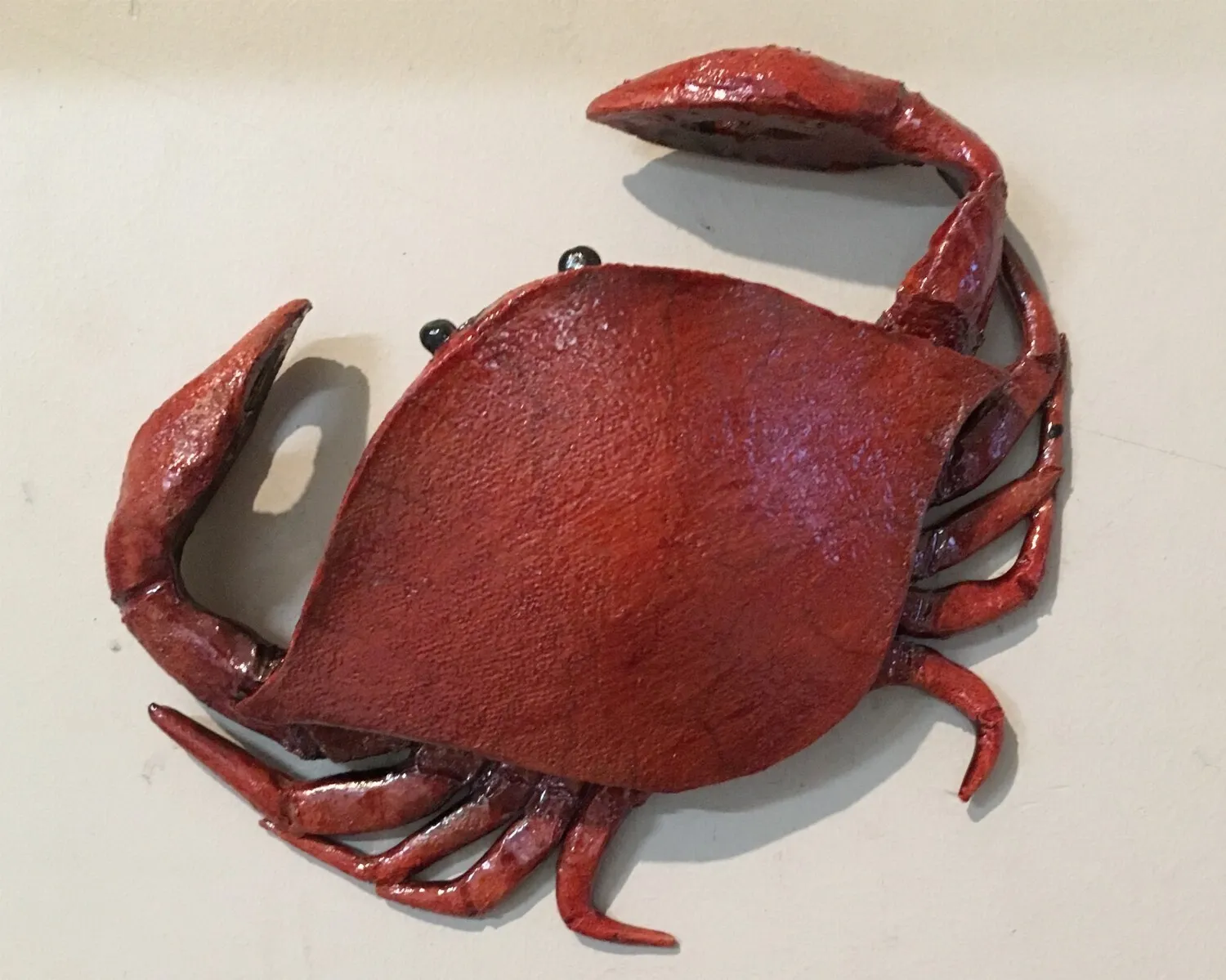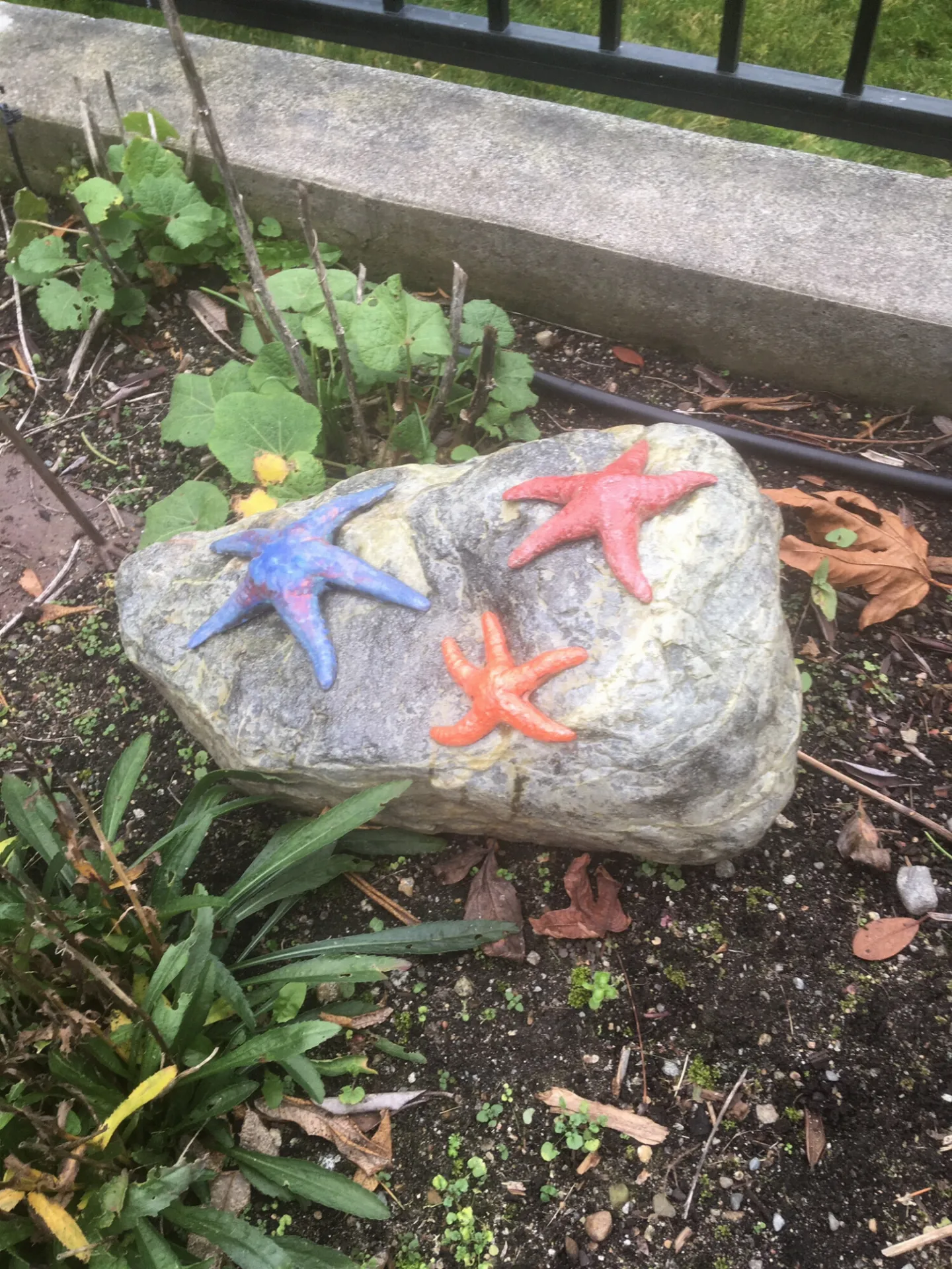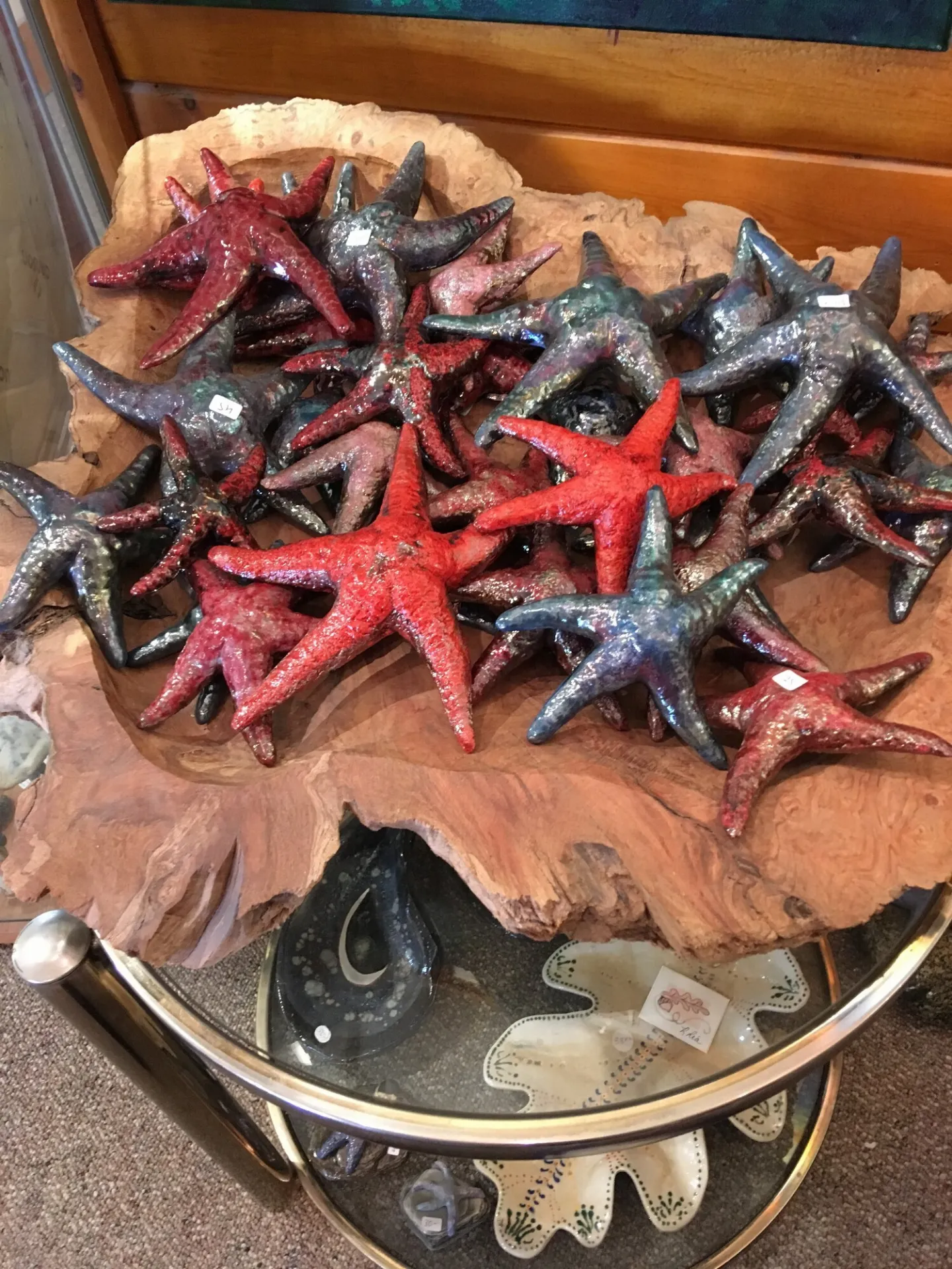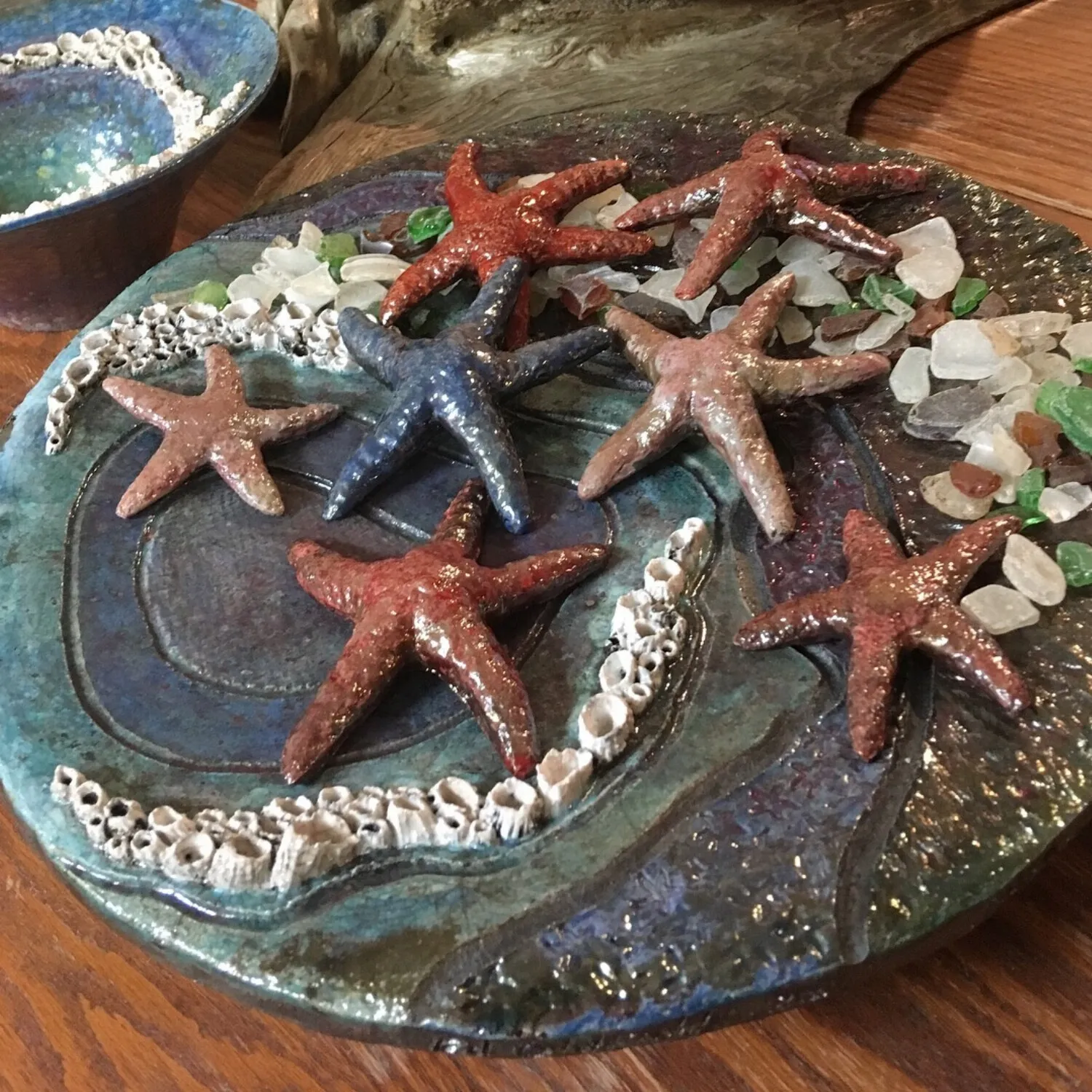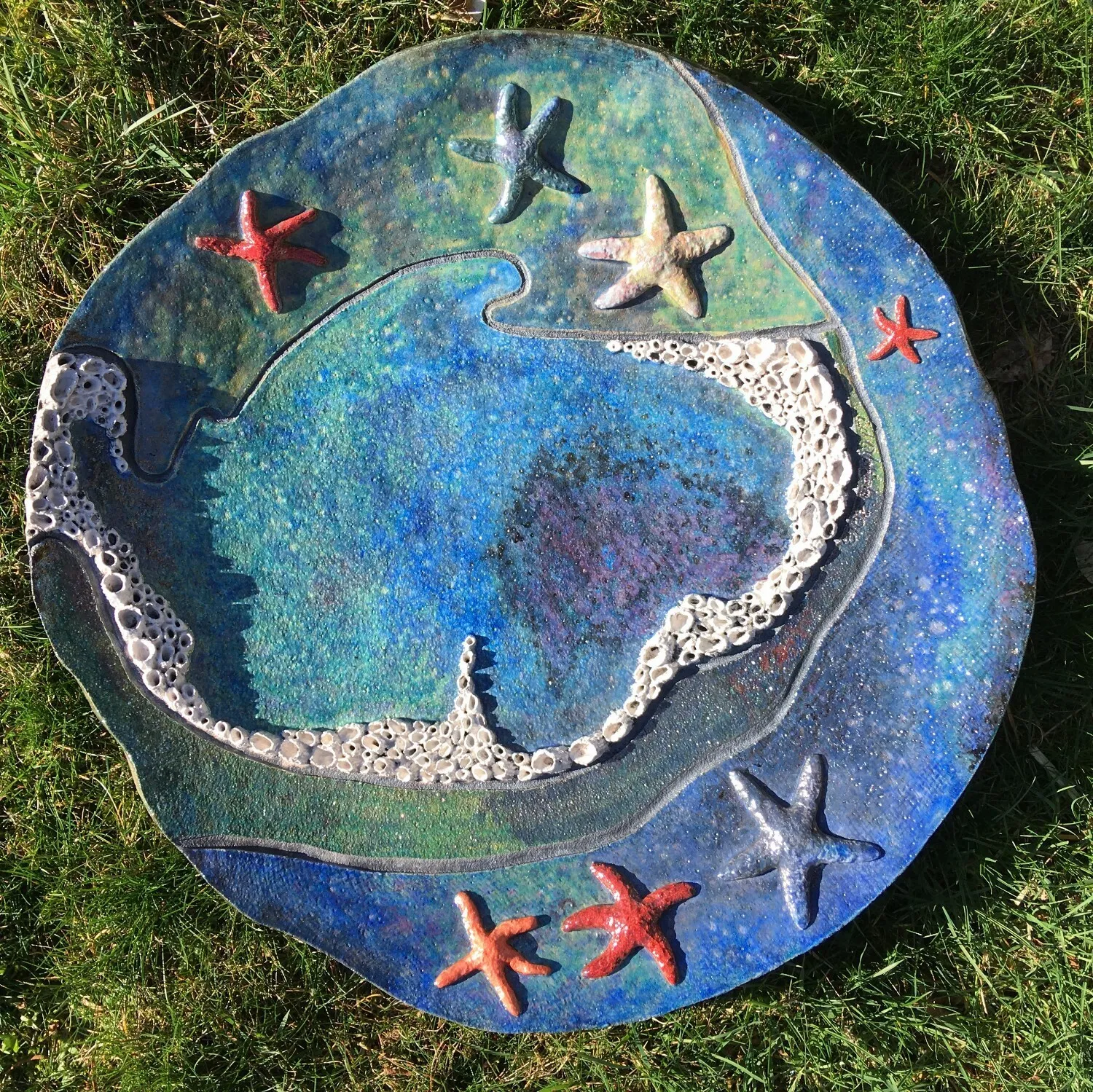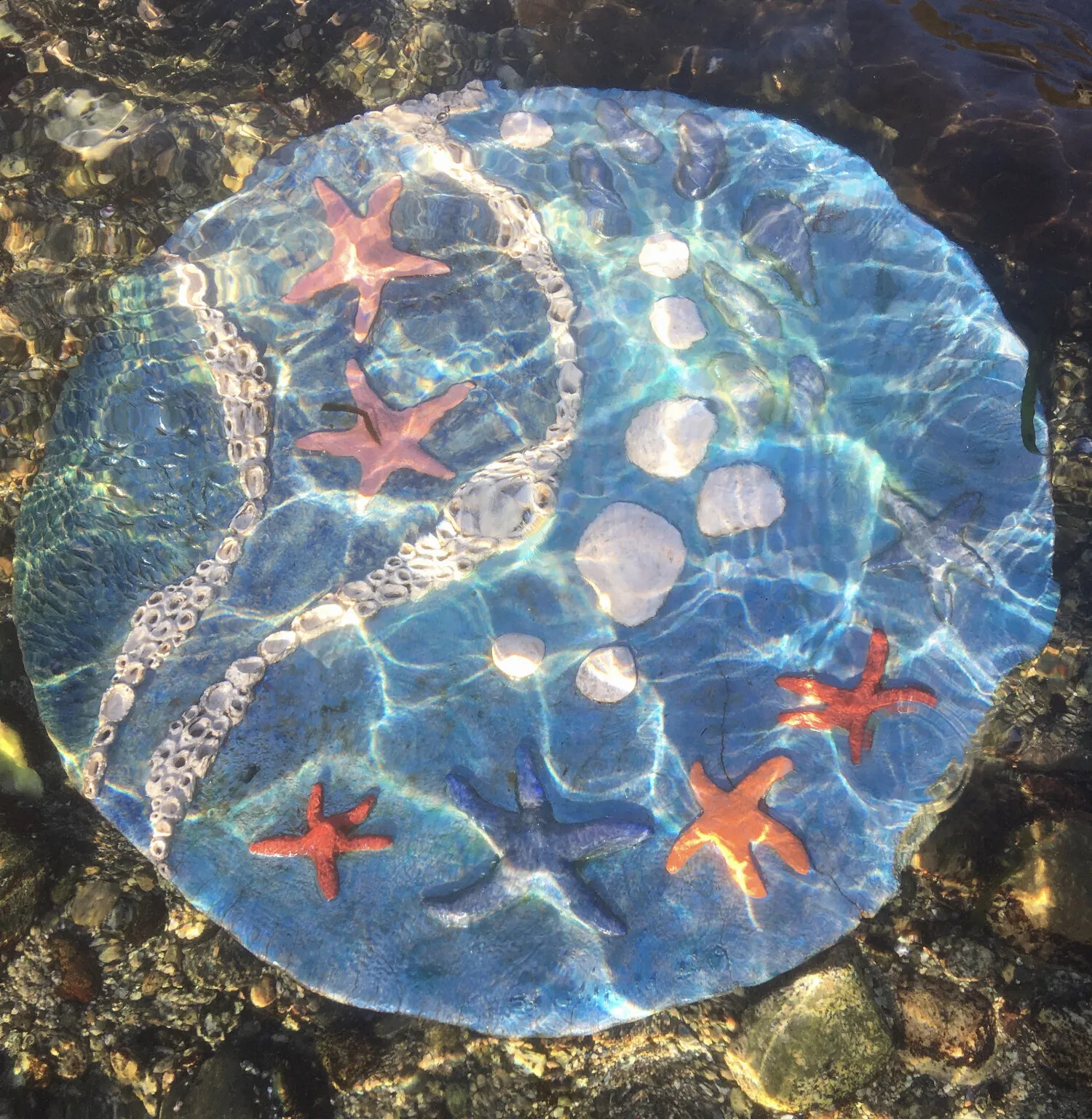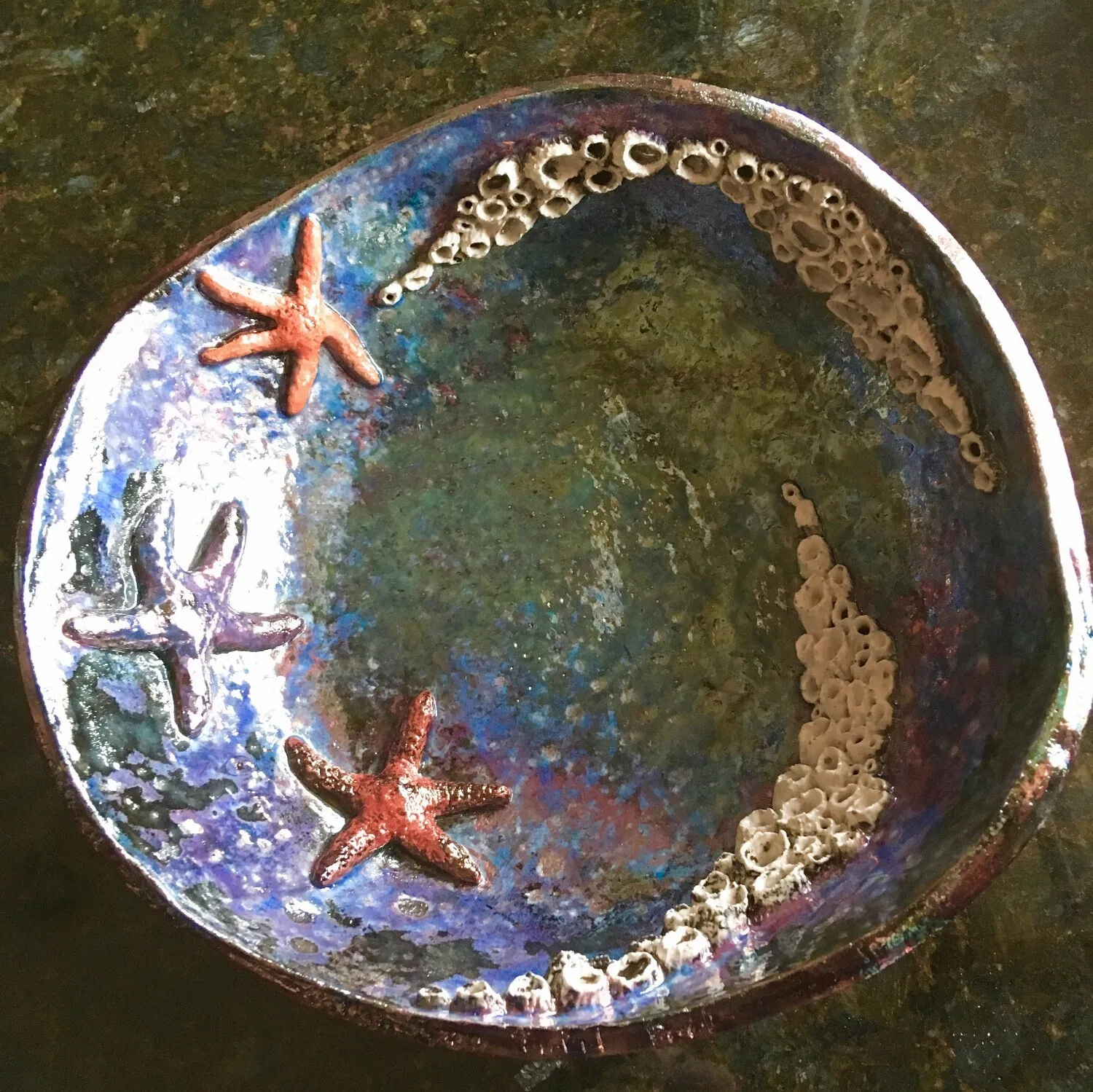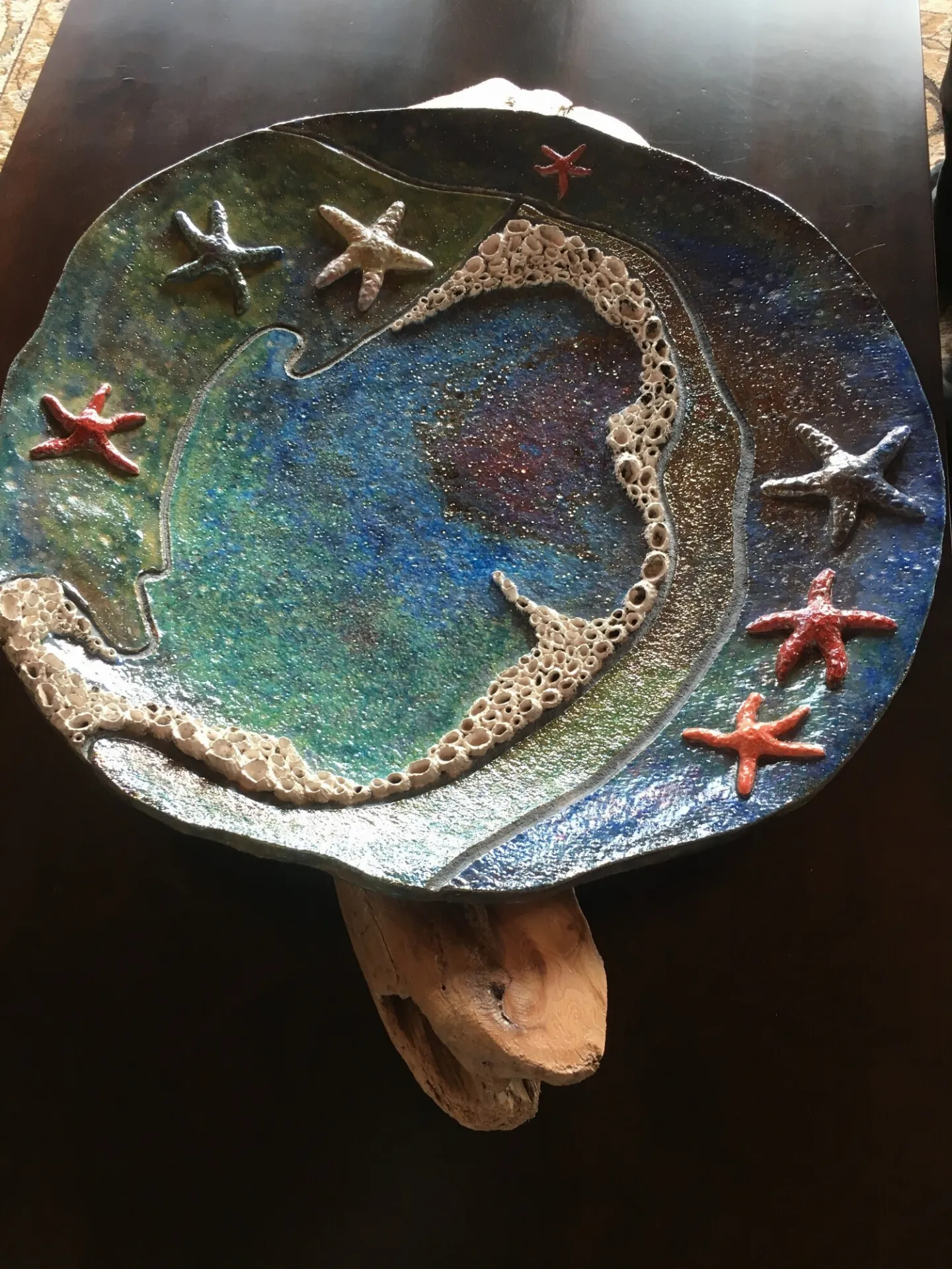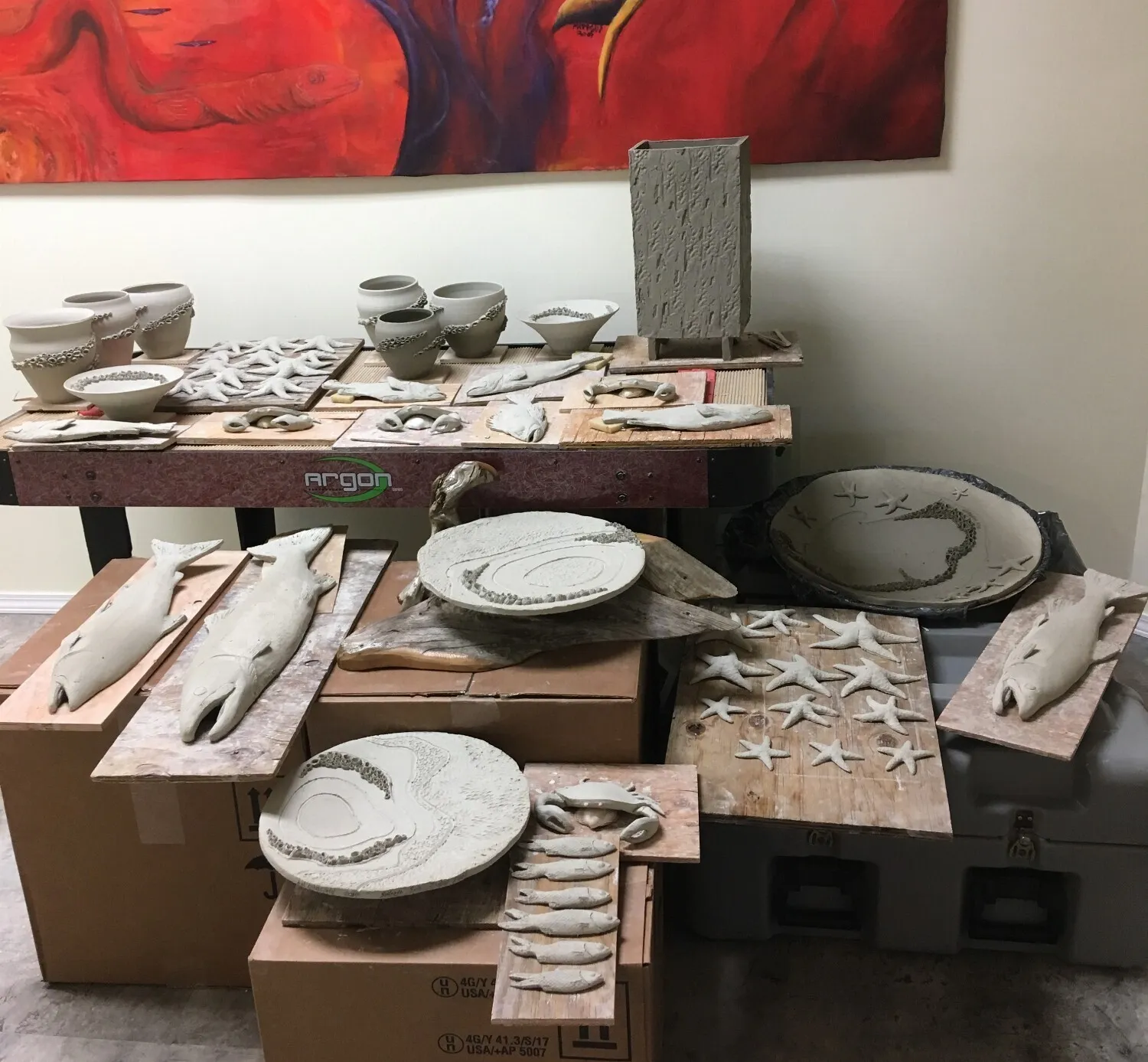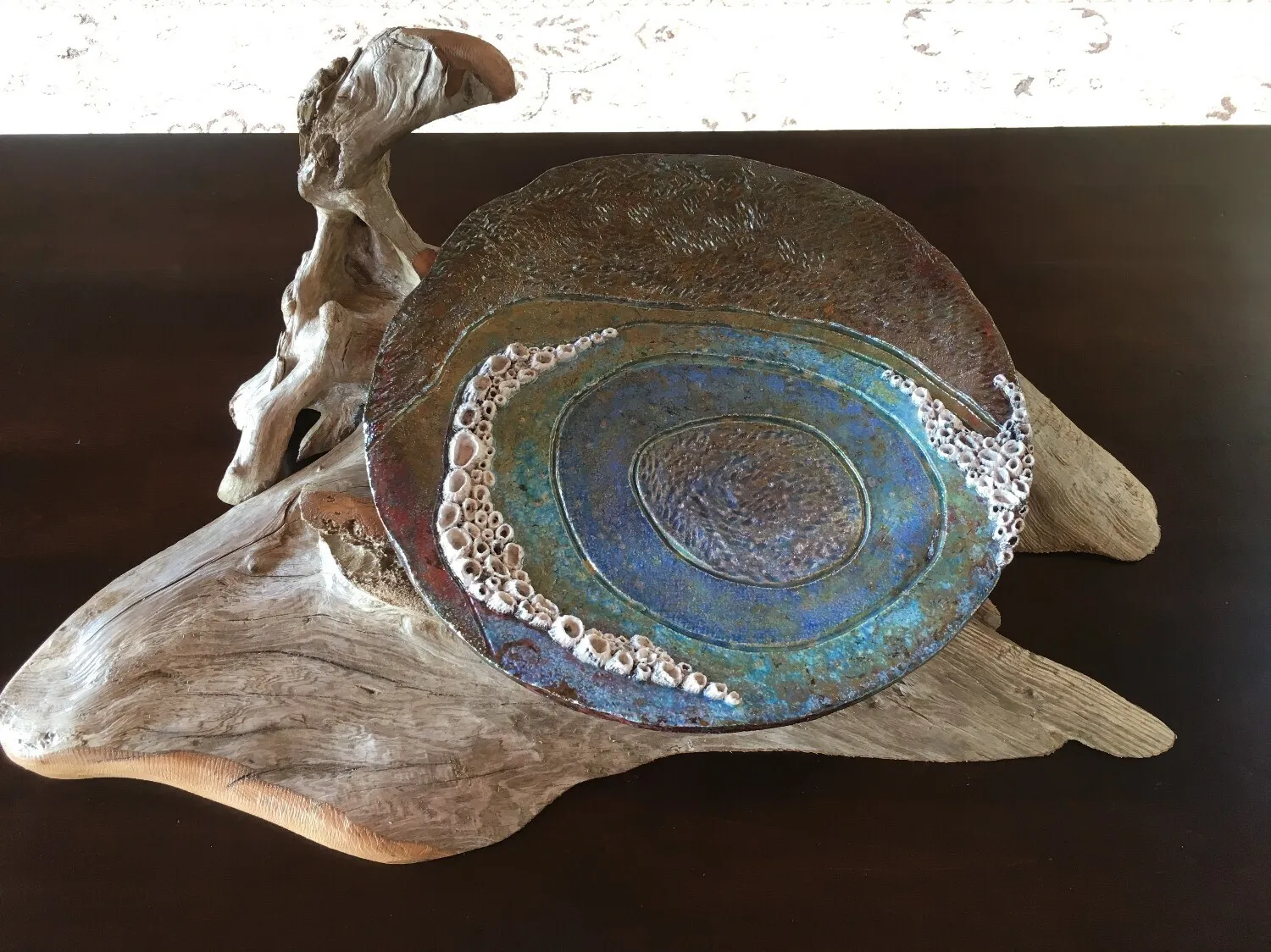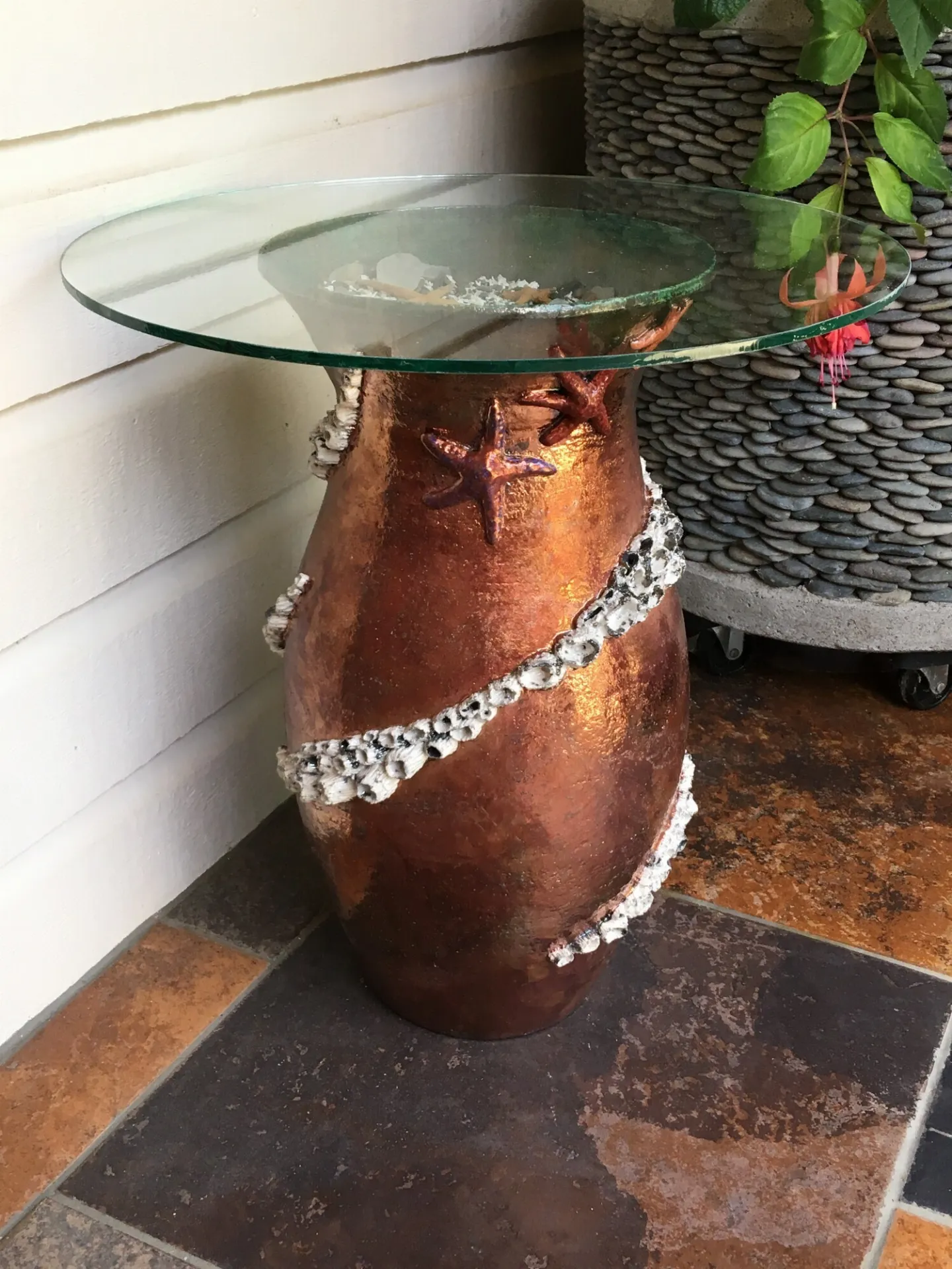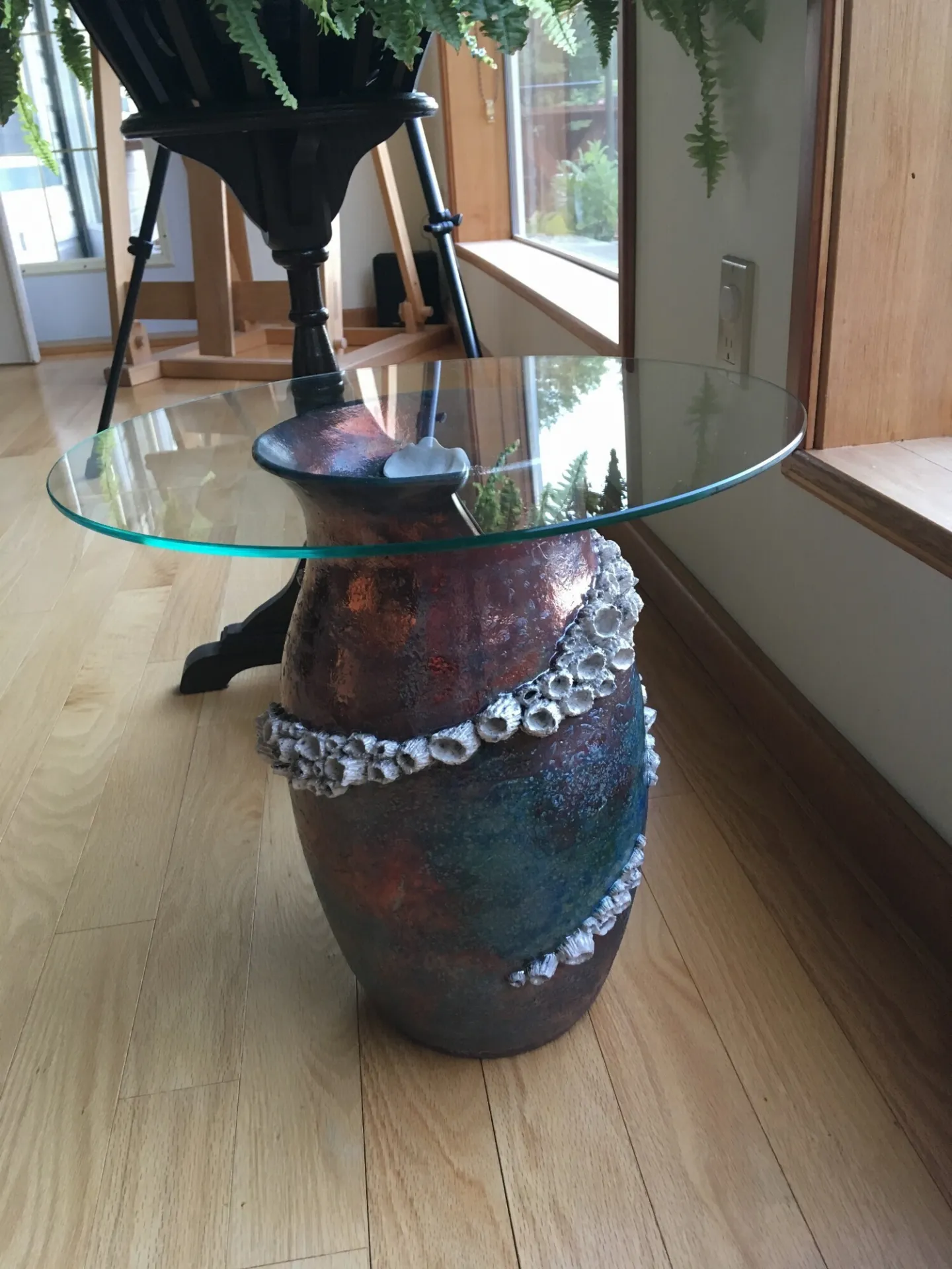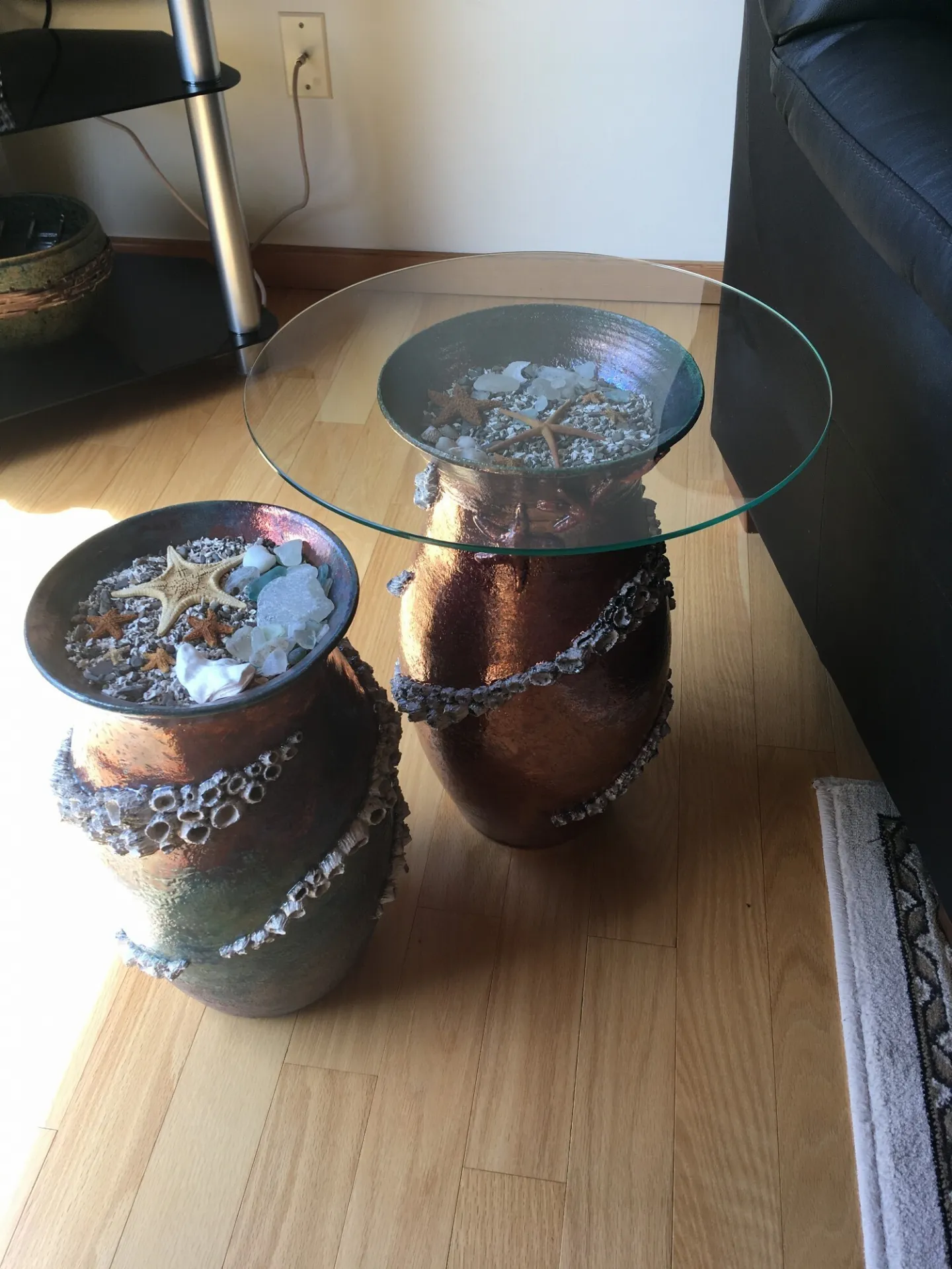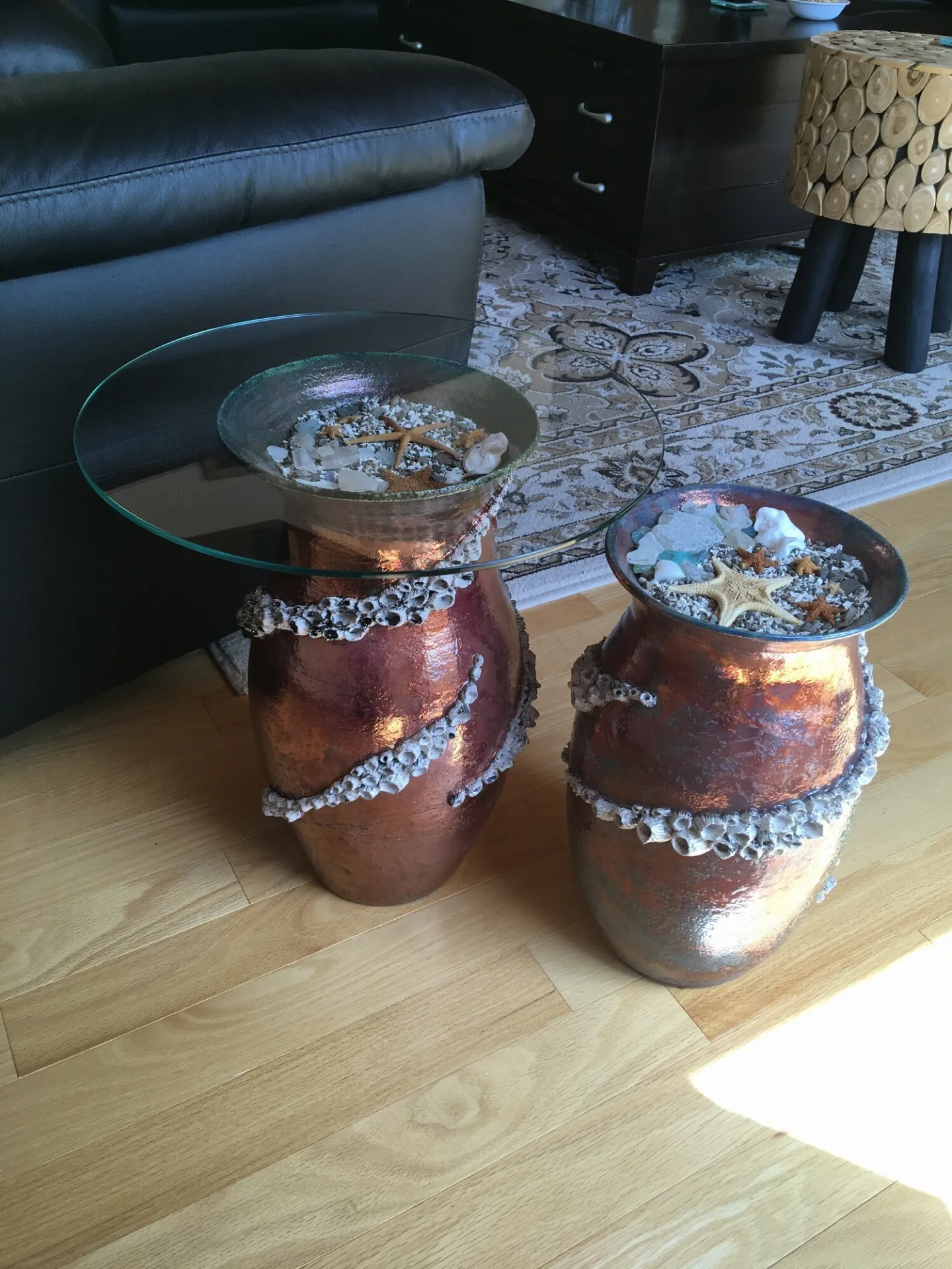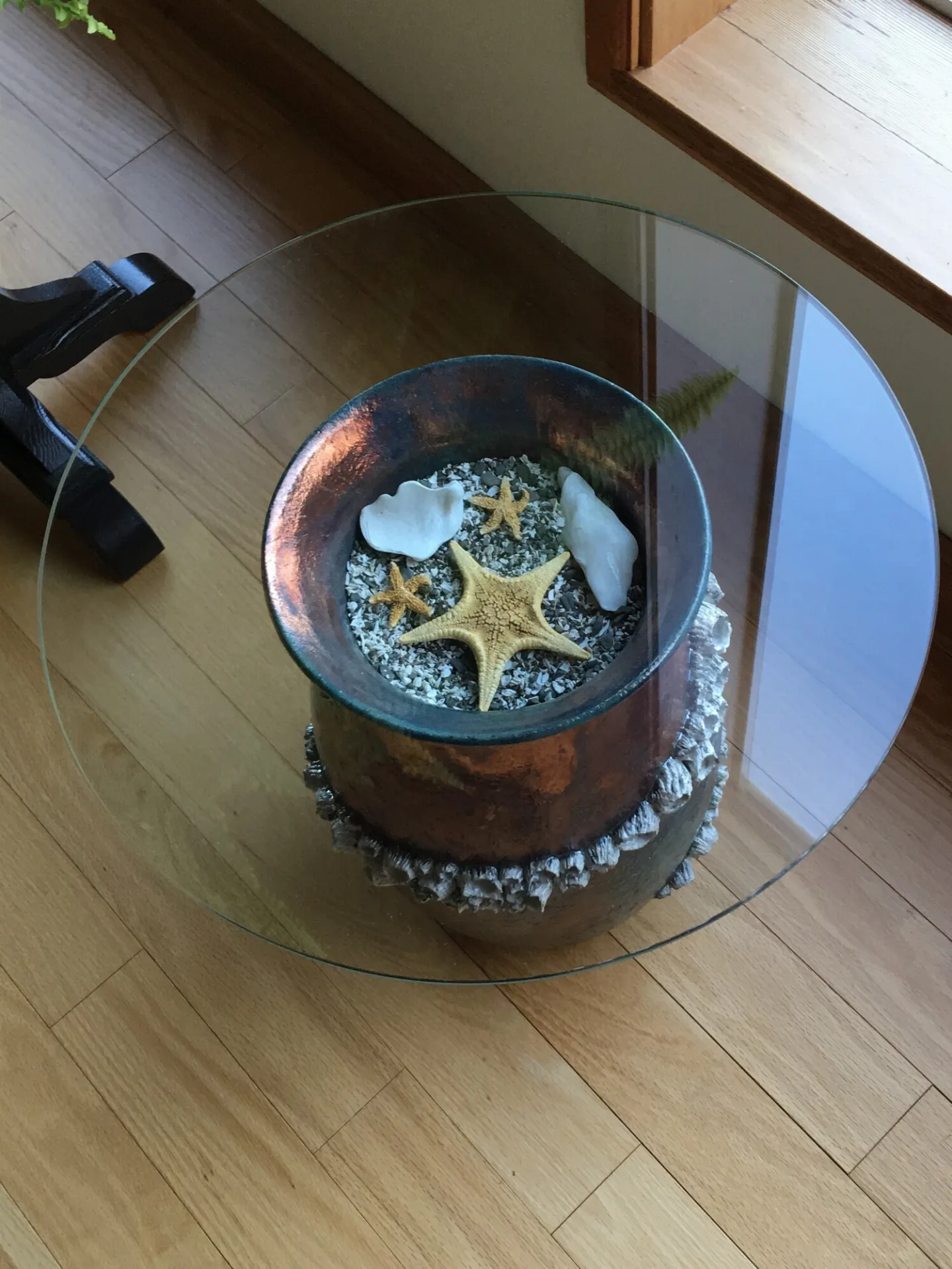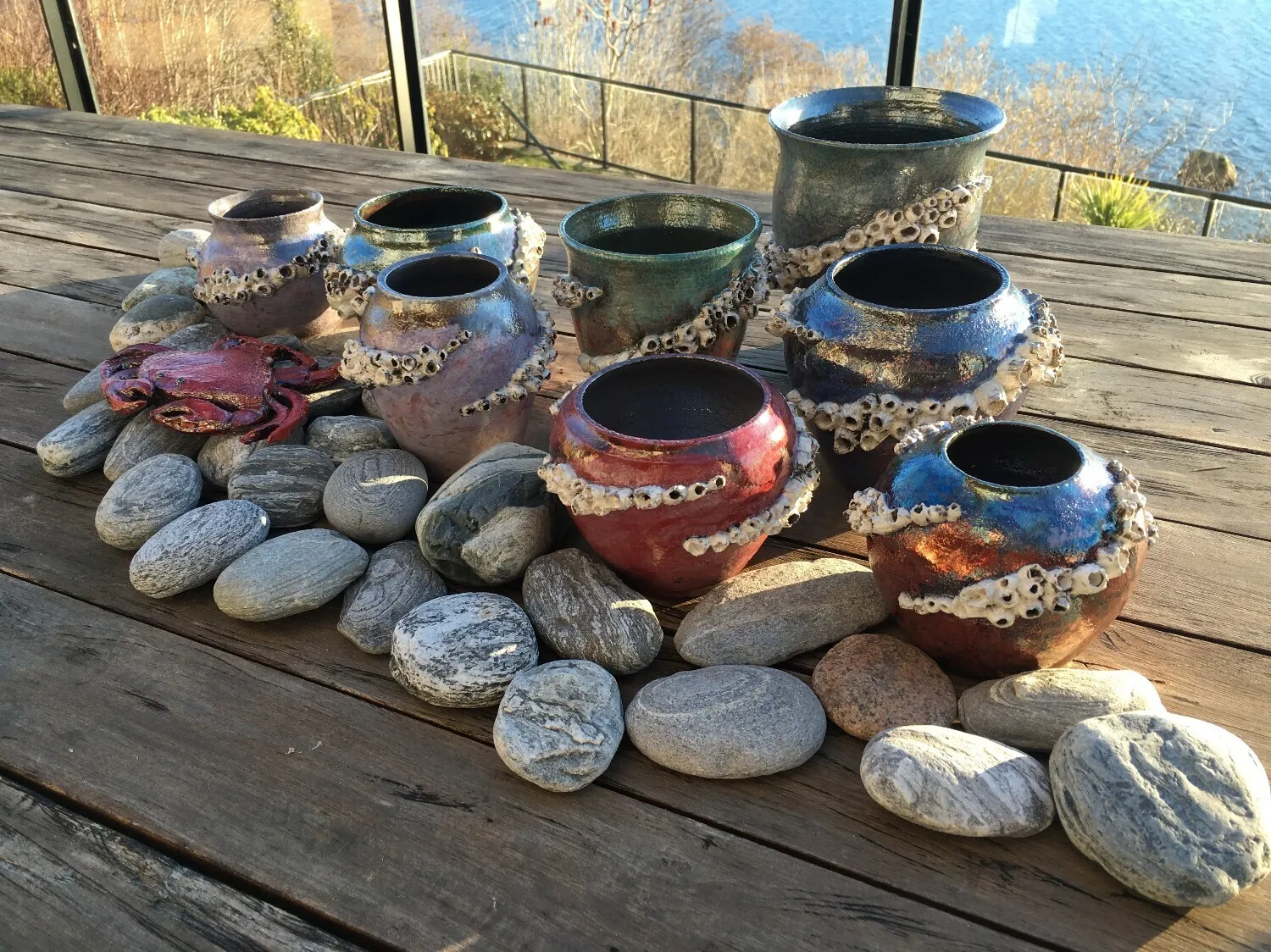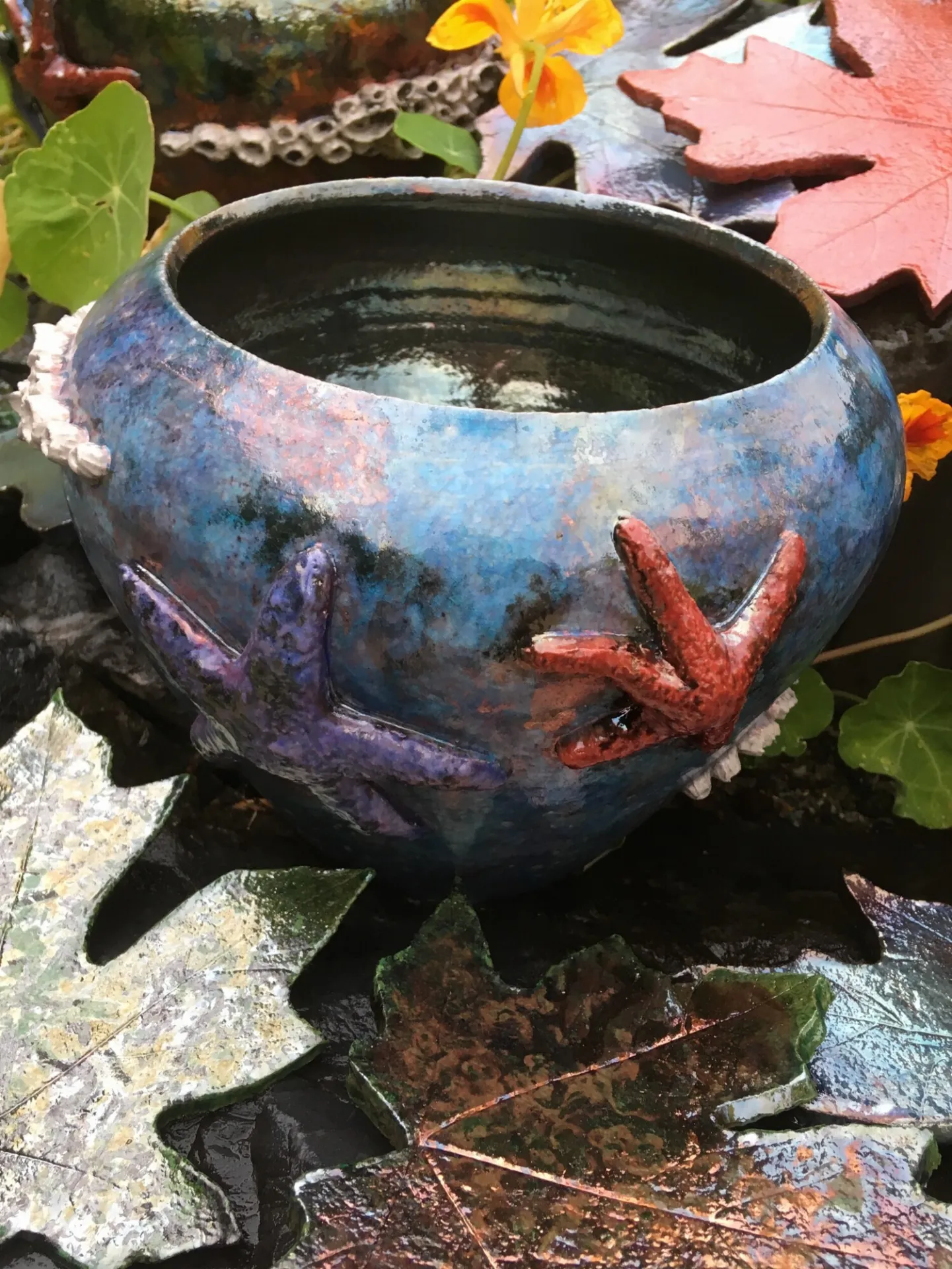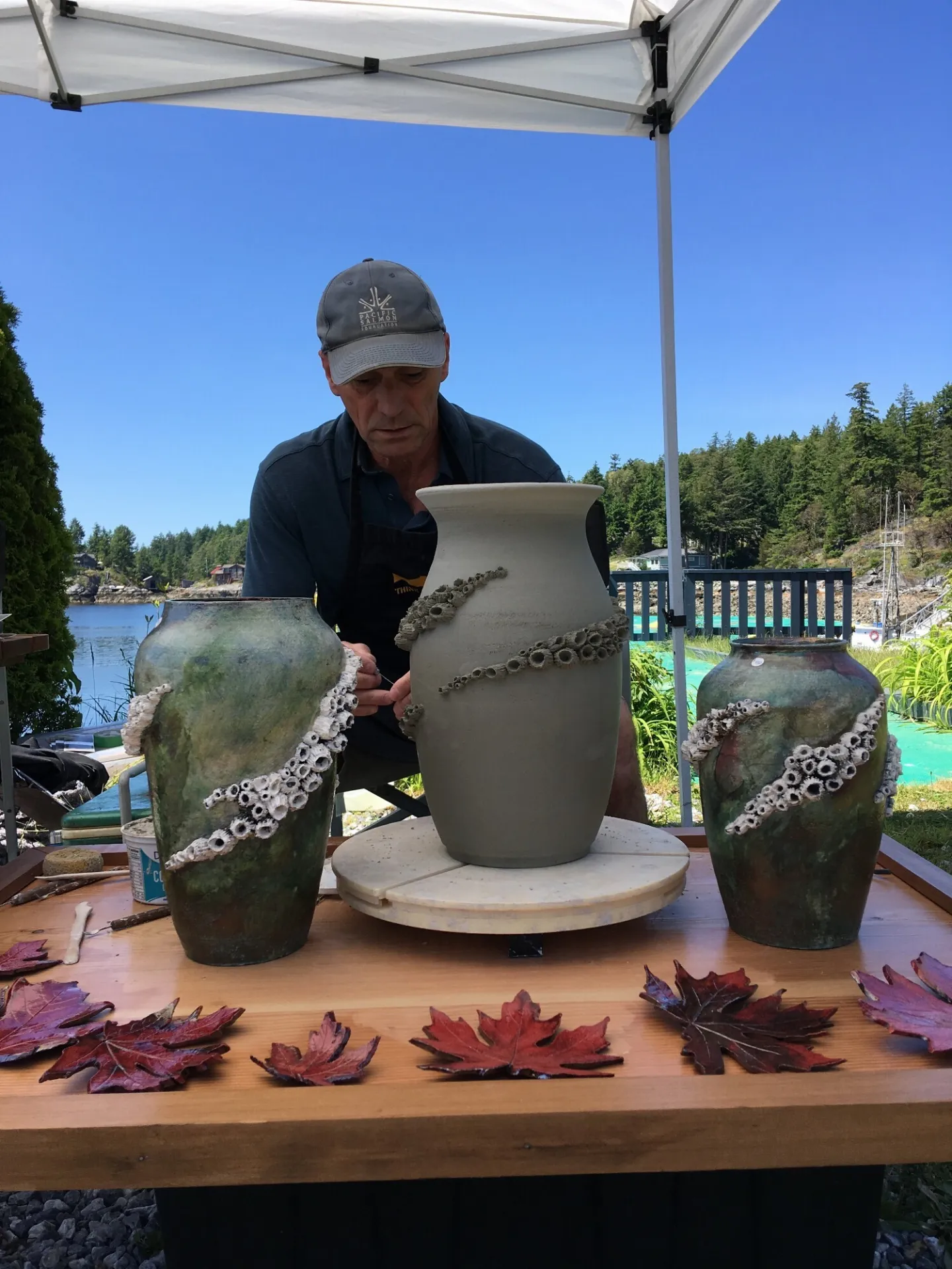My name is Ed Oldfield.
Ed Oldfield is a British Columbia based RAKU artist who has spent the past 20 years learning the techniques, craft, and nuances of raku pottery. His work is based on elements he finds in his local environment and living in Powell River that frequently means the ocean. He was trained as a high school art teacher and he spent many years working as a classroom teacher. He now works full time in his workshop creating unique ceramic masterpieces.

Raku pottery techniques create sophisticated color, patterns, and textures not found in other firing methods or glazing. The process was developed in Japan during the 16th century. The raku process involves ceramic pieces being heated to the point the glaze liquefied, then quickly cooled in an oxygen-free/reduced environment. This is commonly done by placing extremely hot, fired pieces in a metal can filled with combustibles. The combustibles ignite, a lid is placed on the can, and the oxygen is burnt off. Temperature the clay is heated to, the cooling speed, the speed with which oxygen is depleted, chemicals in the combustibles, humidity, and glaze compounds all affect the piece's final color. As these factors are nearly impossible to control, each piece emerges from the kiln as a unique, one of a kind creation. The process can best be described as a “dance with fire,” and I continue to enjoy the art of each dance. Thank you for taking an interest in my work, and I hope you will find this web page informative and interesting.
215 Remembrance Project
On July 1, 2021 I started my 215 Remembrance Project. My plan is to make 215 orange Raku Maple Leaves to recognize the 215 children found at the site in Kamloops. These leaves will be placed in quiet, natural settings in the lower mainland and on Vancouver Island over the next year. If you come across one you are welcome to keep it. My hope is that the leaves will provoke thought surrounding issues of racism in the people who find them.
My Latest Artwork
What I Do
About Raku
Raku is the process of firing clay that was developed in Japan. The word "raku" means "happiness through chance." This process involves applying a glaze to bisque clay work, heating the clay to about 1850 degrees Fahrenheit and quickly placing the clay piece in an airtight container with combustibles.
The combustibles ignite, burning off the supply of oxygen. This procedure oxidizes the glaze, giving a metallic finish to the surface. The resulting color is determined by a variety of factors including the minerals in the glaze, the temperature of the clay piece, the type and humidity of the combustibles, and the speed at which oxygen is burned off.
As it is nearly impossible to control all of these factors, color results are unpredictable and beautifully varied allowing the hand of nature to imprint each piece with unique qualities.
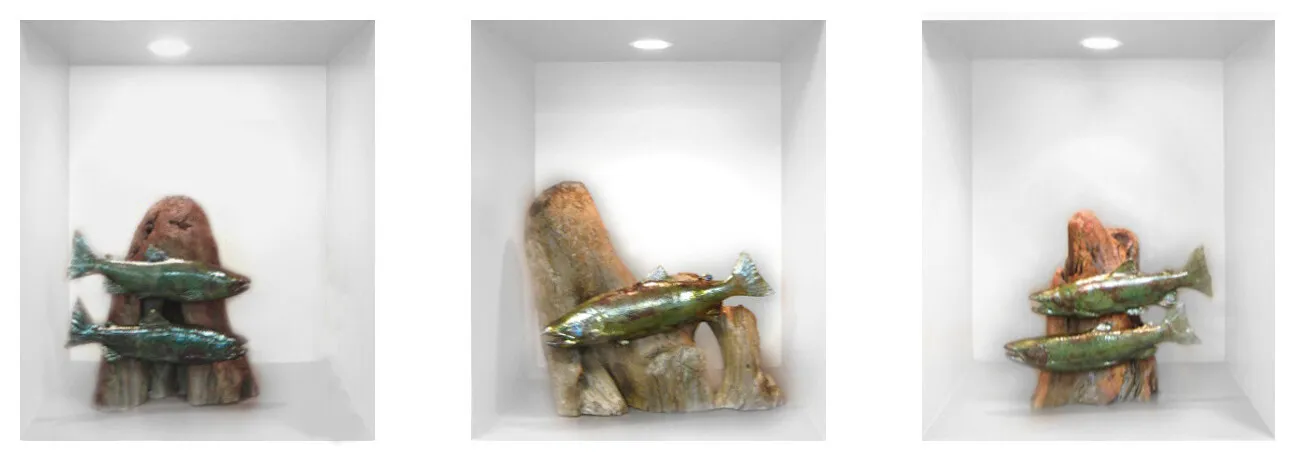
About Ed
"My fascination with archaeology has led me to have a deep appreciation for the permanence of clay. My love of coastal British Columbia has given me a deep respect for the First Nations culture and their art. I am particularly proud of my Cherry Bark series of raku pots because they combine so many elements that are fundamental to my artwork and my life. It is my intention to capture the essence of the West Coast antiquity. The combination of clay work with the woven cherry bark is, I believe, a unique synthesis of traditional pottery and Aboriginal basket weaving."
- Ed Oldfield
Ed Oldfield was born in Orillia, Ontario, in 1955. While still young, he moved with his family to Duncan, British Columbia. He graduated from high school in 1973 and continued to the University of Victoria to study Visual Art.
Ed's love of nature and his surroundings is apparent in all his work. From his Cherry Bark or Barnacle series, Sea Stars, Rockfish, or large scale Salmon installations. They are a testament to his fondness of and the permanence of clay matched with the ephemeral nature of raku and the delicate environments from which they are inspired.
Ed resides in Powell River. After 28 years of teaching visual arts and pottery art at the high school level, he now channels his artistic energy into creating uniquely west coast art.
Where You Can Find Me
Aquamaris Art Gallery
Duncan
Salish Sea Market
Bowser
Side Street Studio
Oak Bay
Qualicum Art Supply & Gallery
Qualicum
Treehouse Gift Co.
Tofino
Tug Ghum Gallery
Lund
Village Gallery
Sidney
Stock Home Design
Victoria
I do not give studio tours at this time.
Purchases must be made through one of my galleries, I do not sell from home. Custom work and wall features can be arranged through one of the gallery managers or by contacting me by Email.
